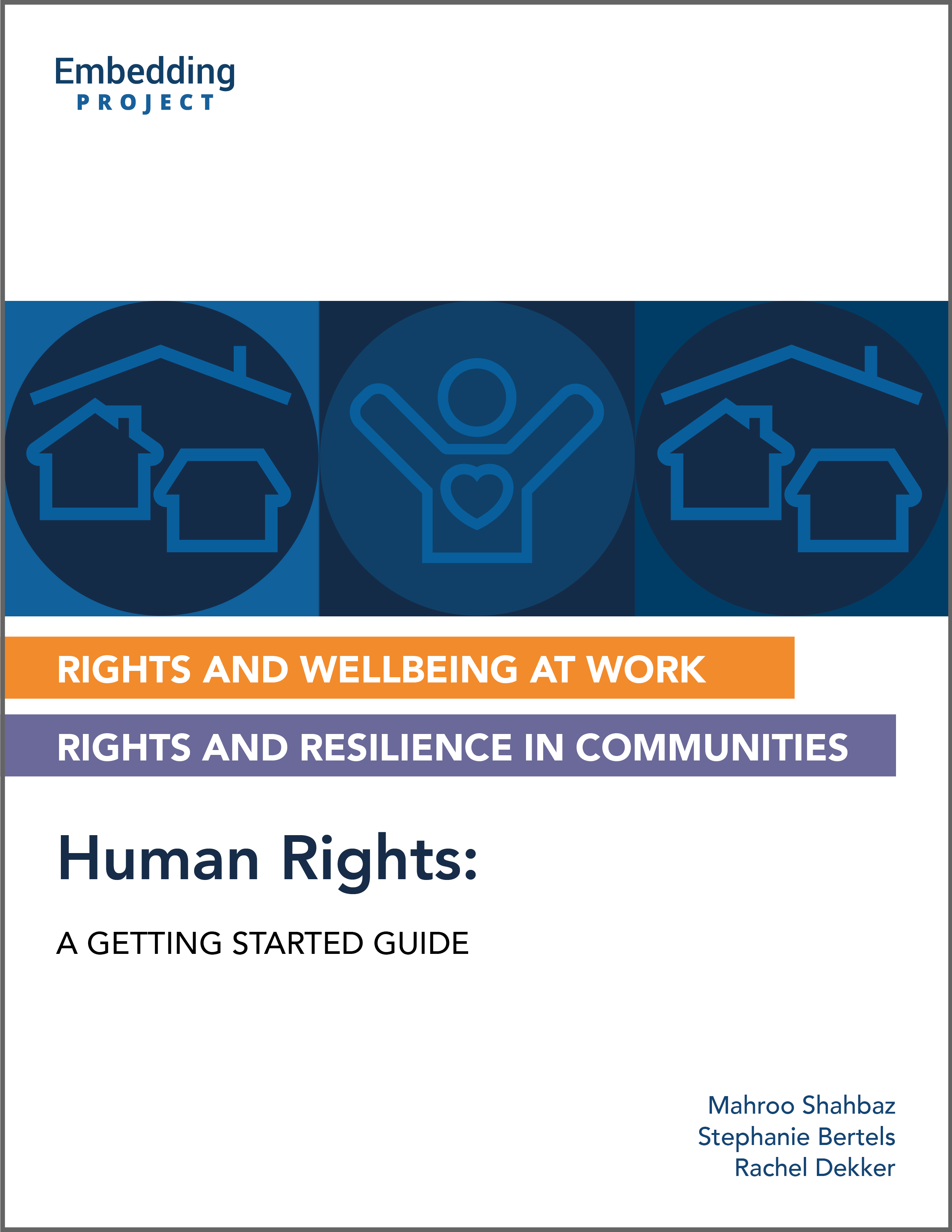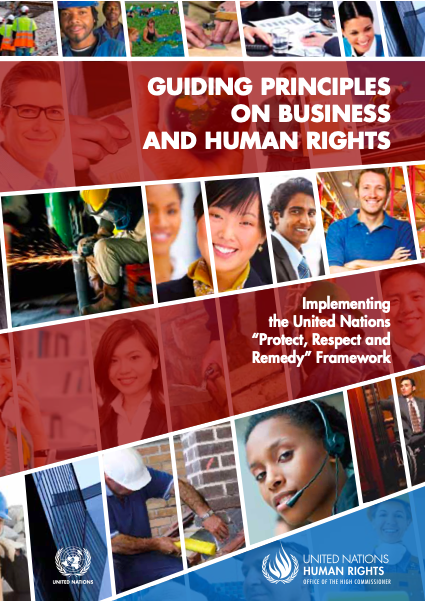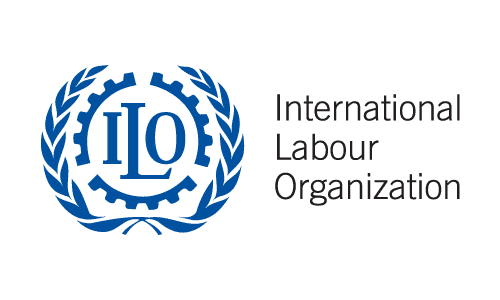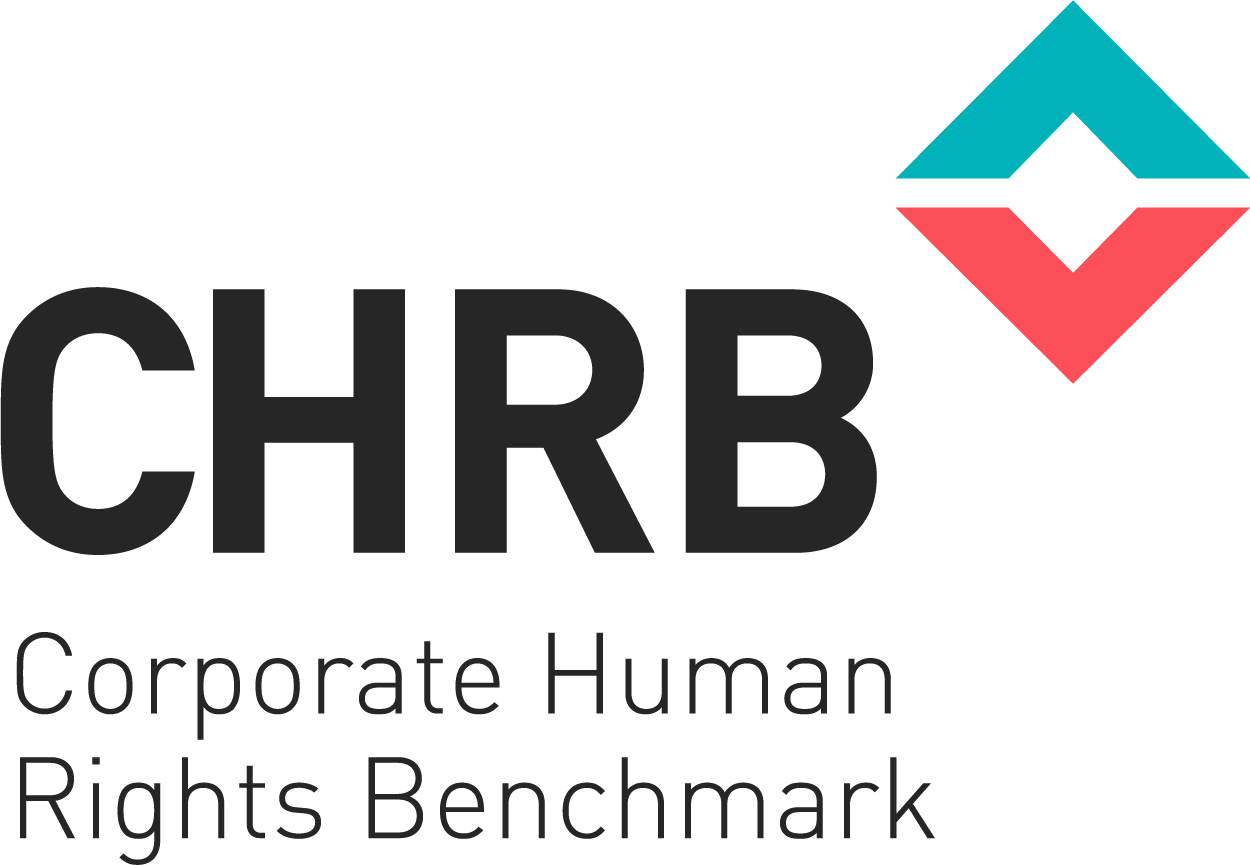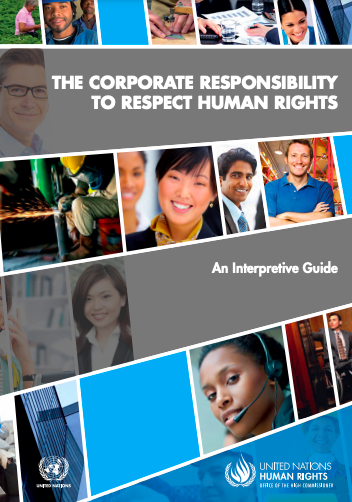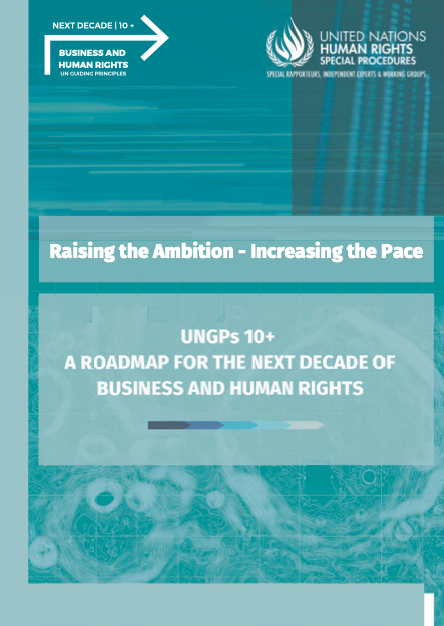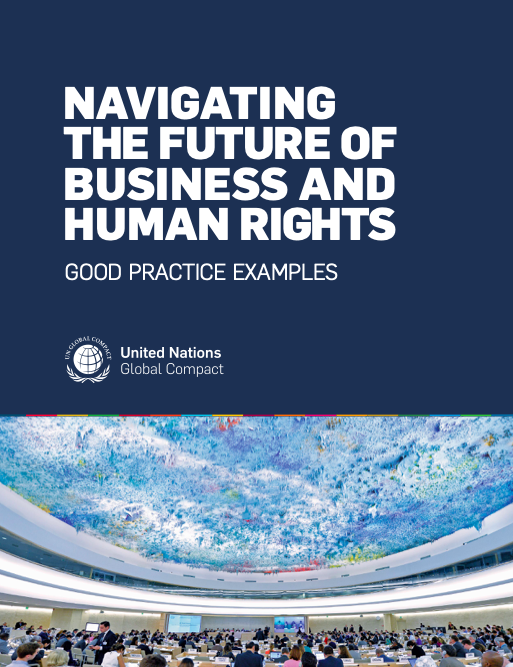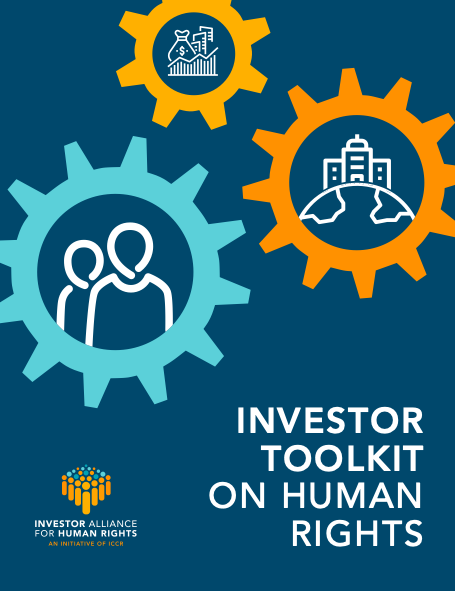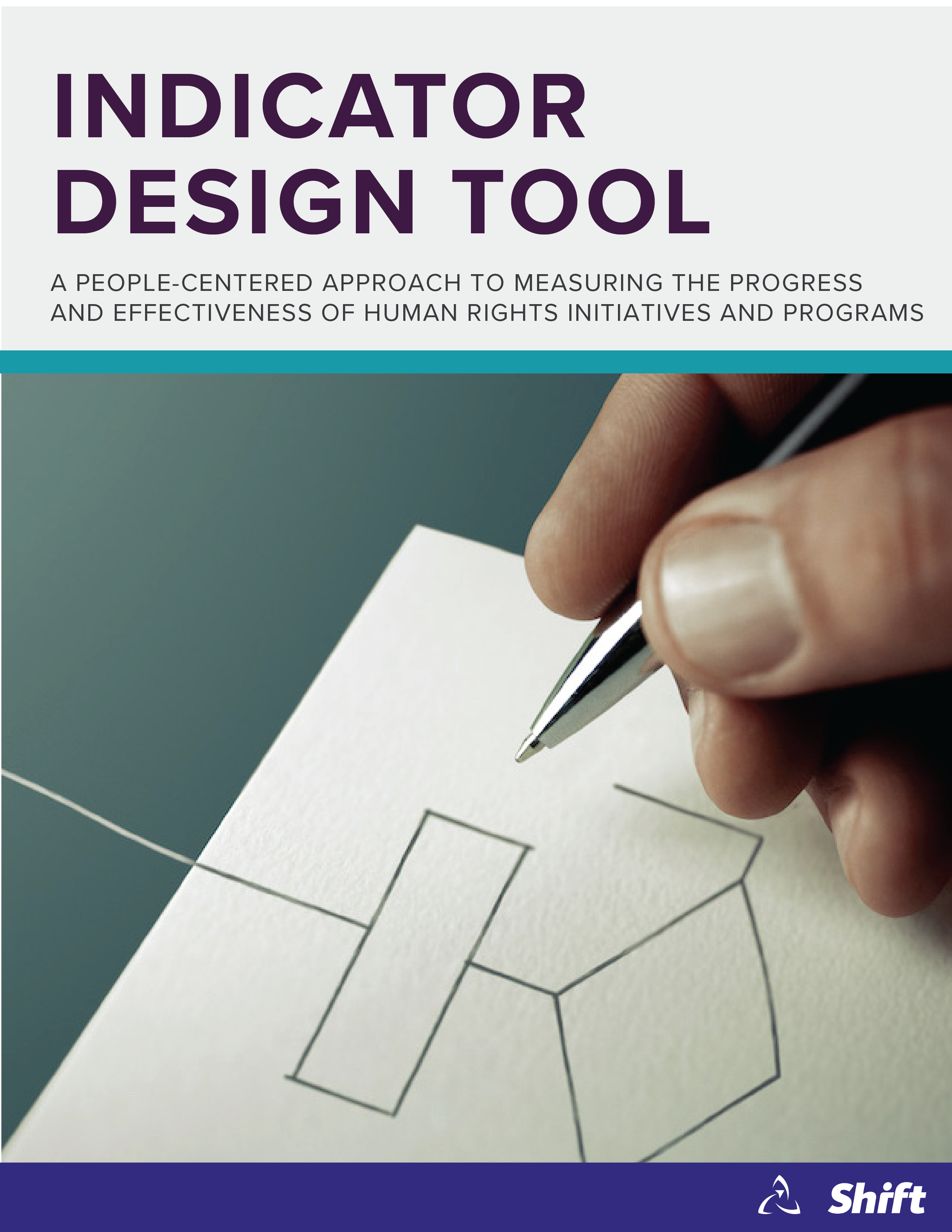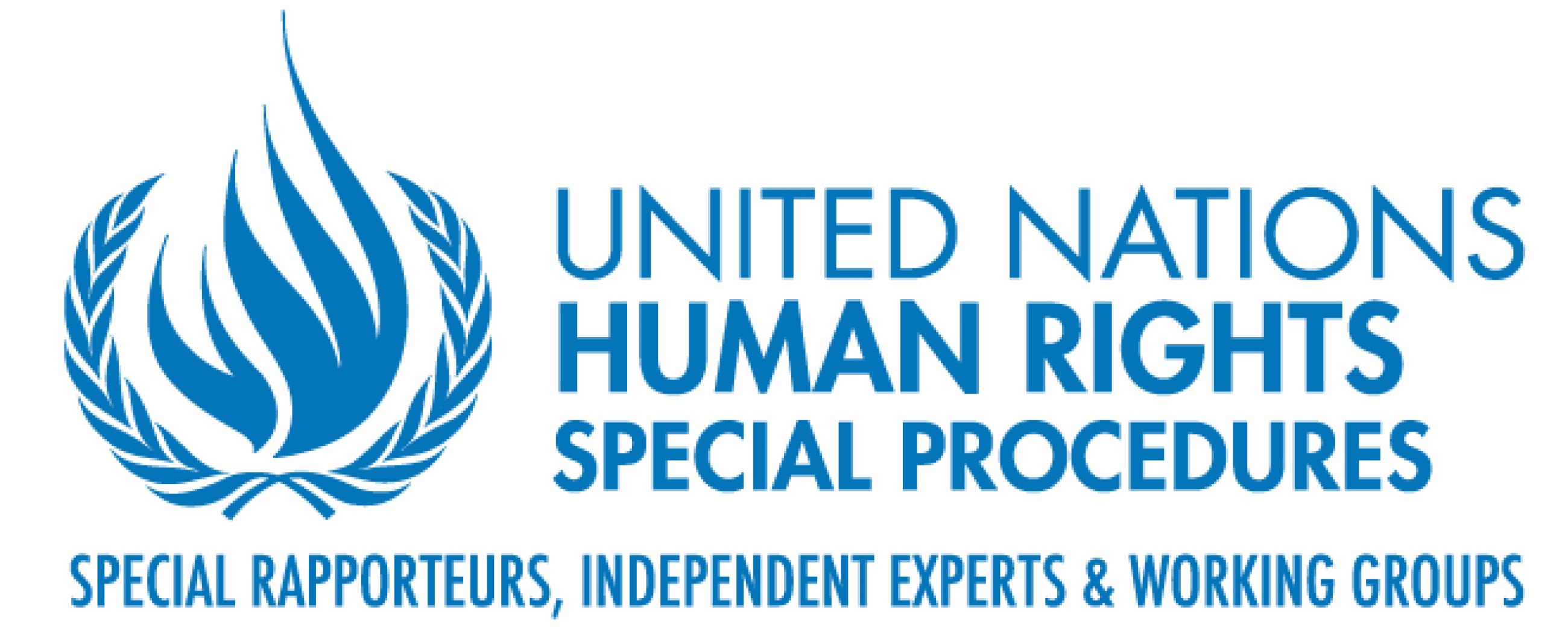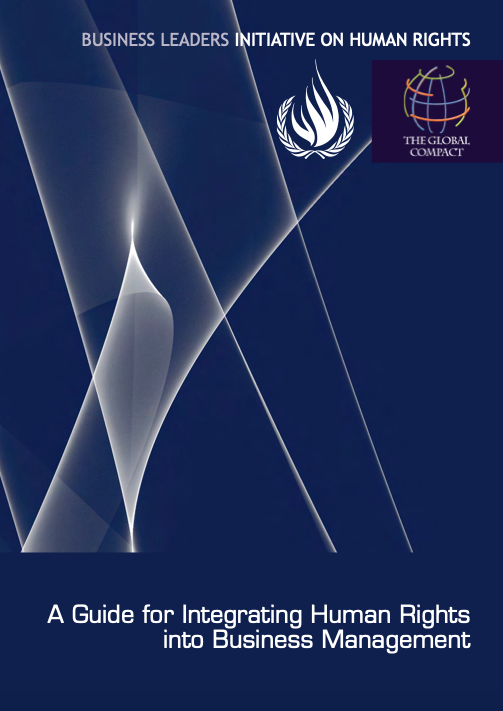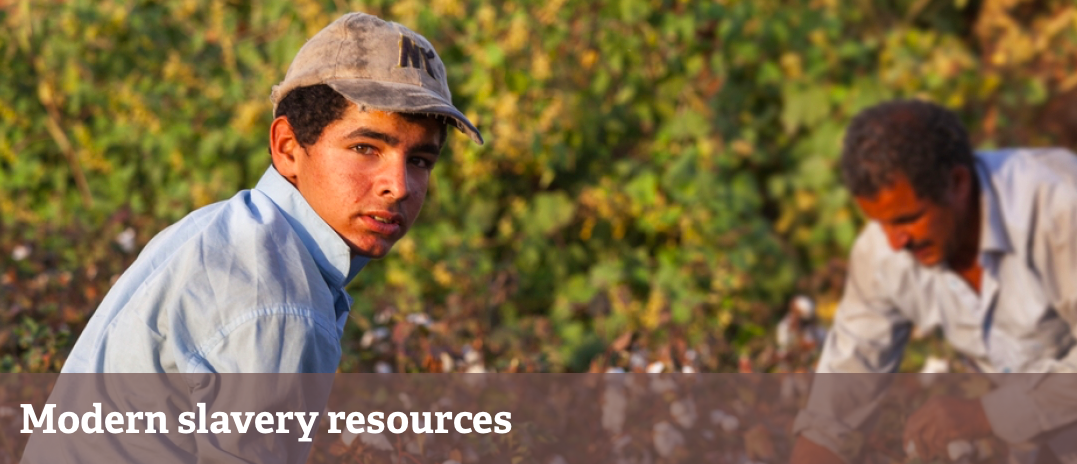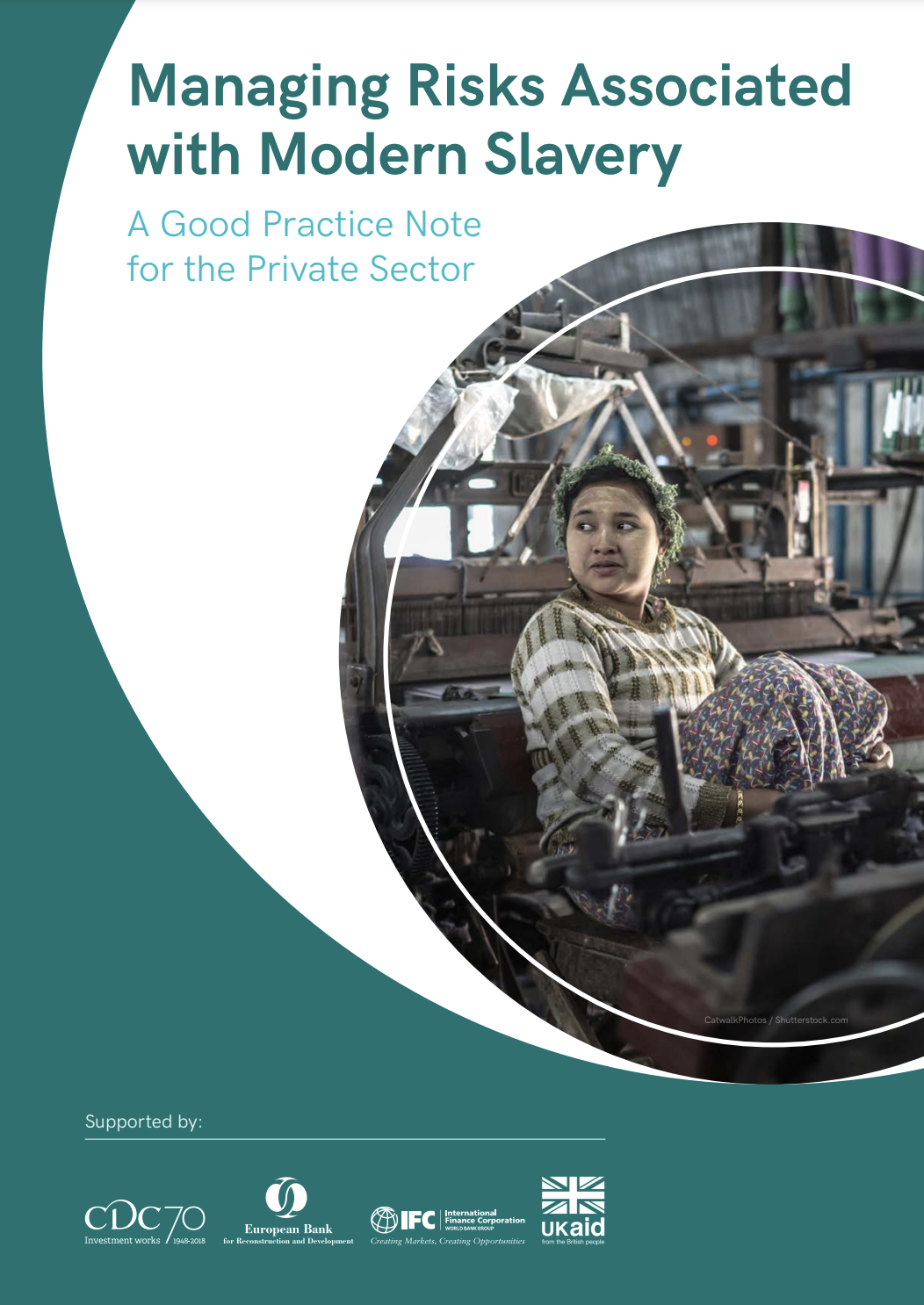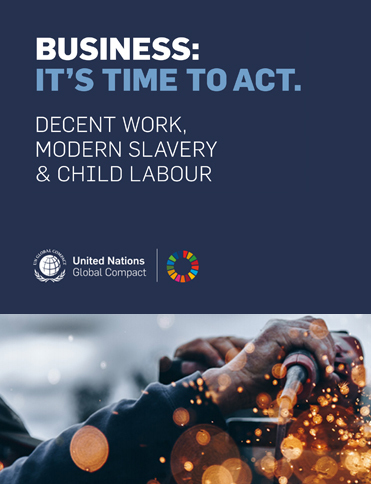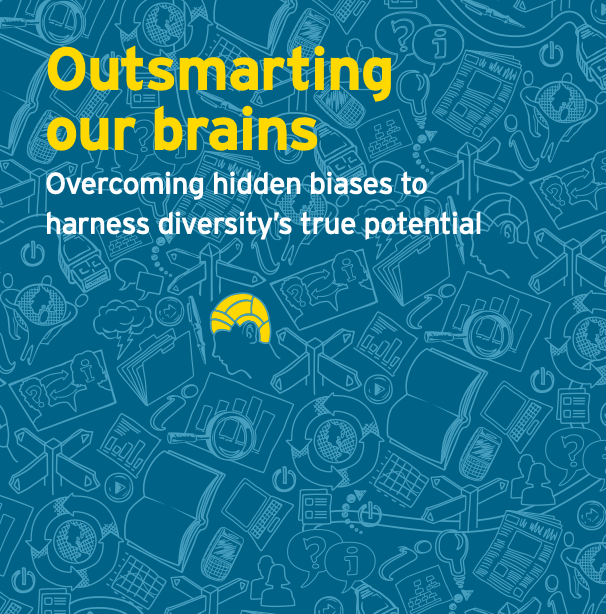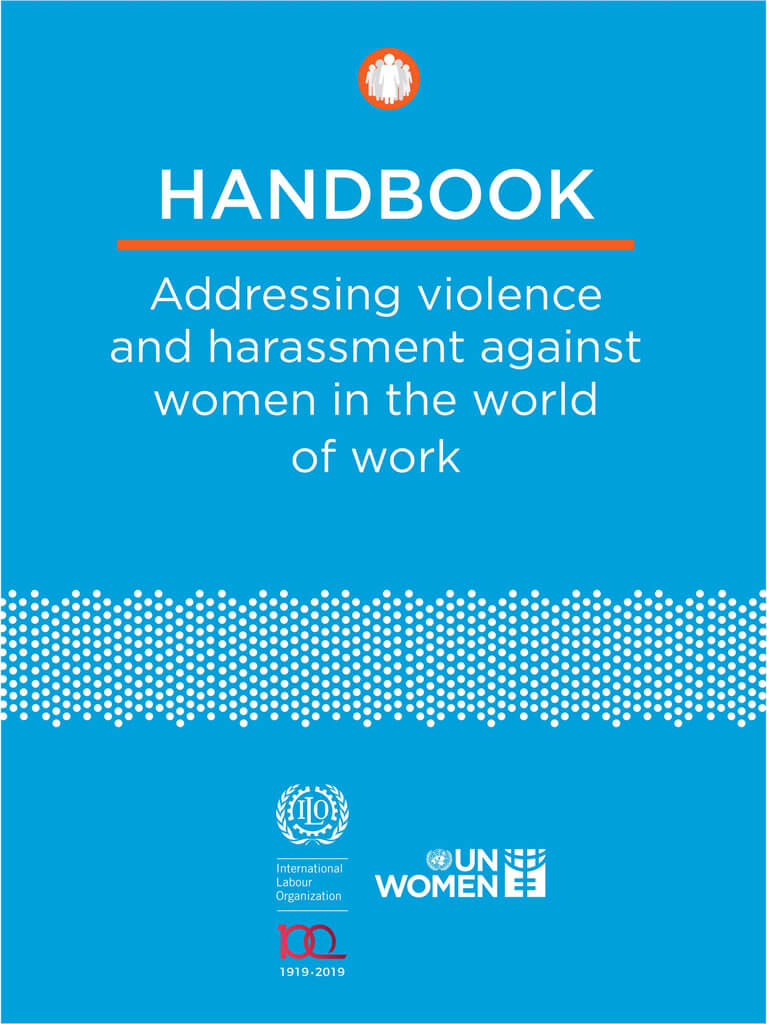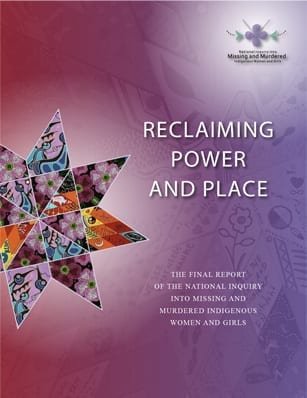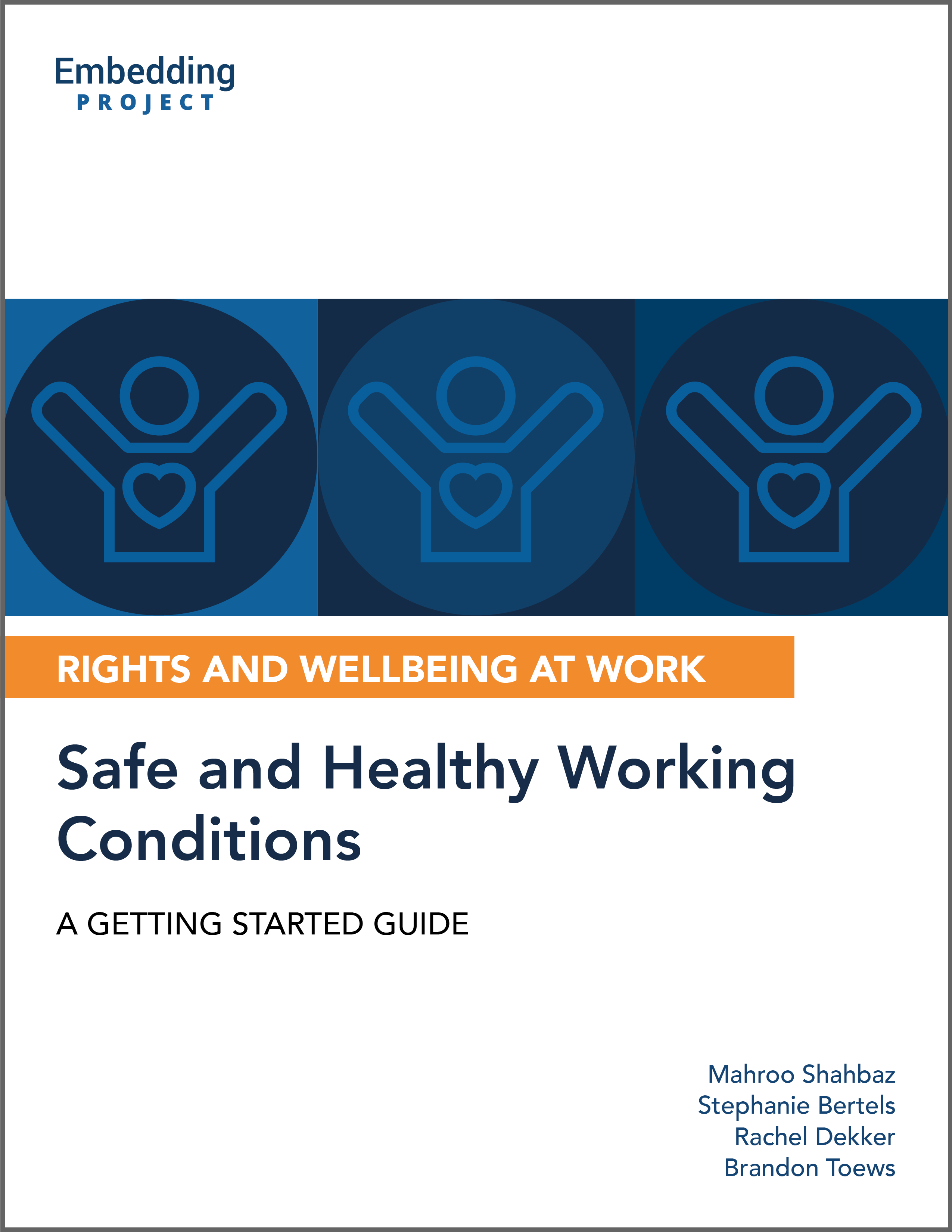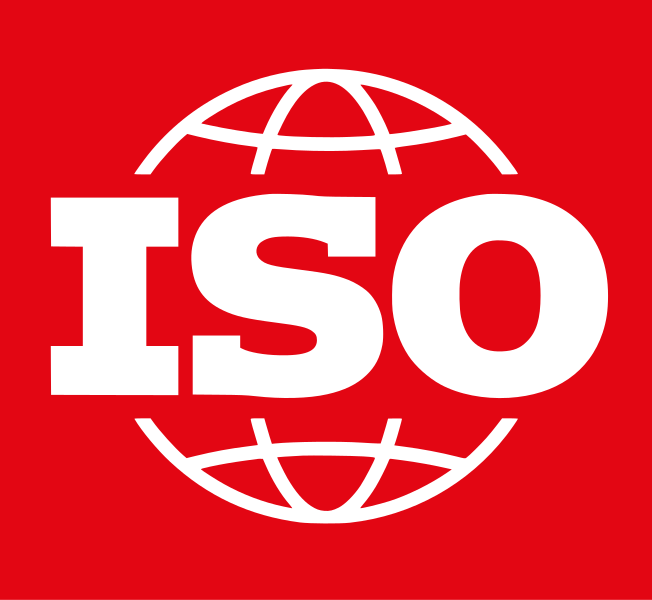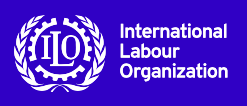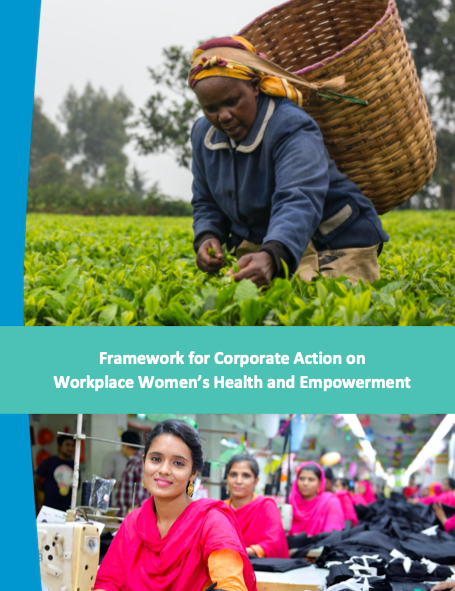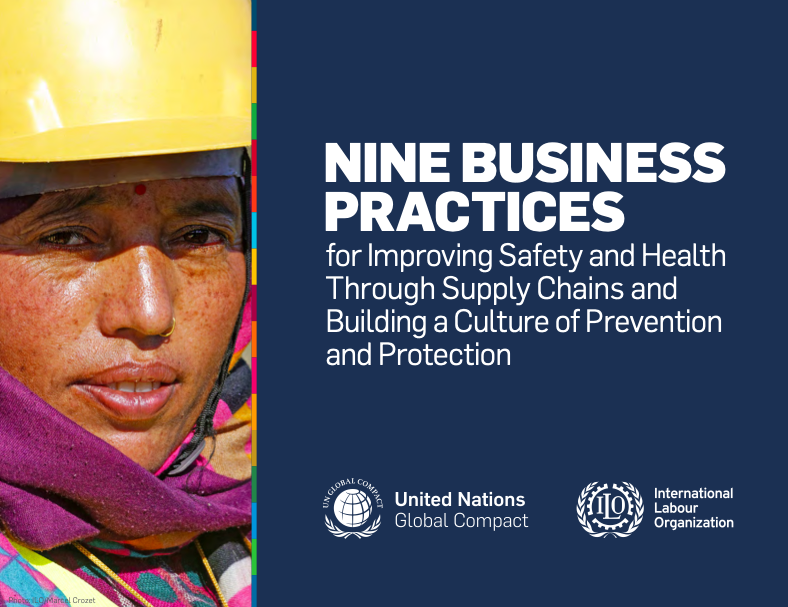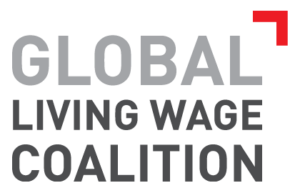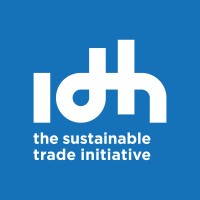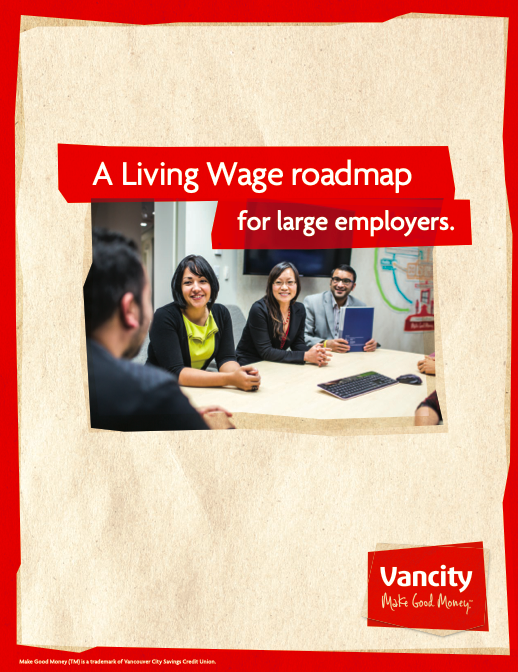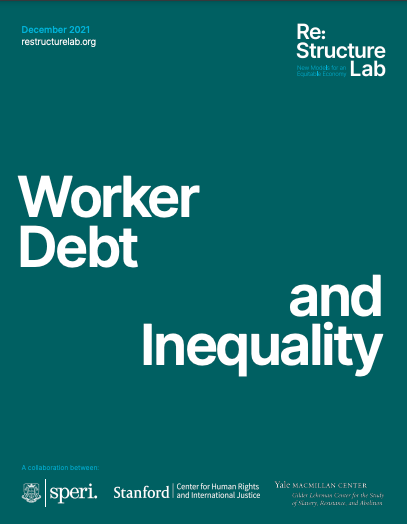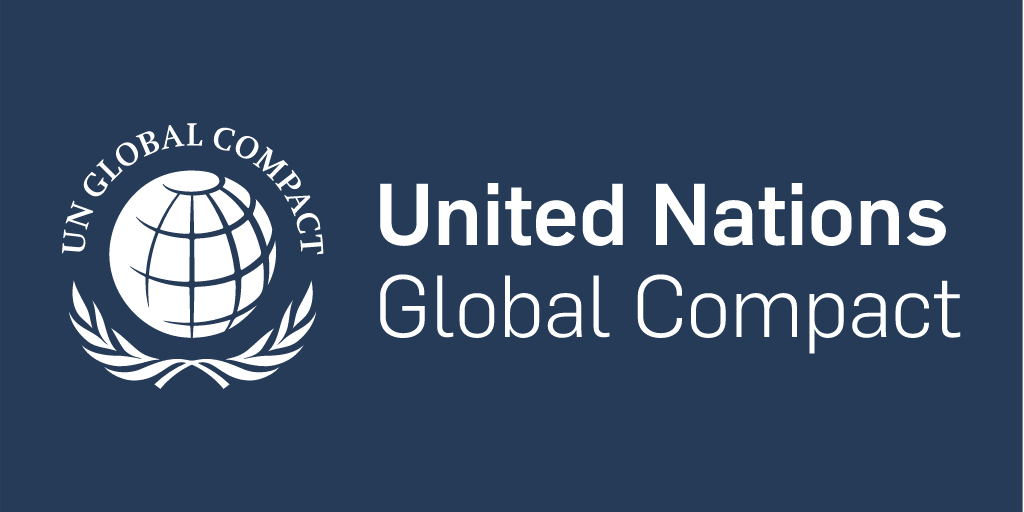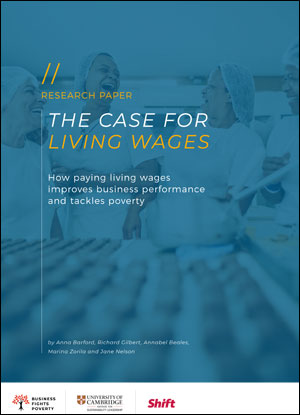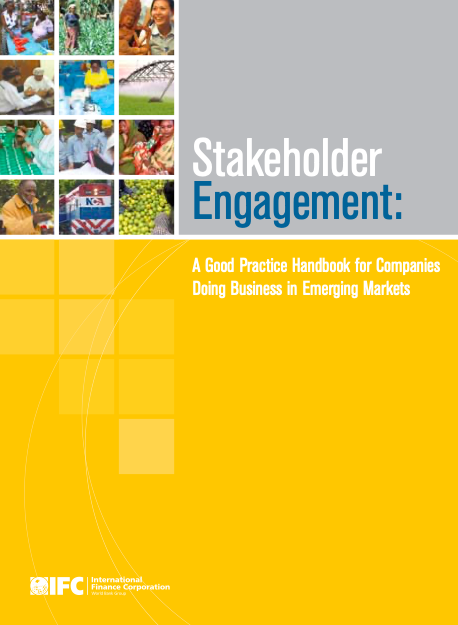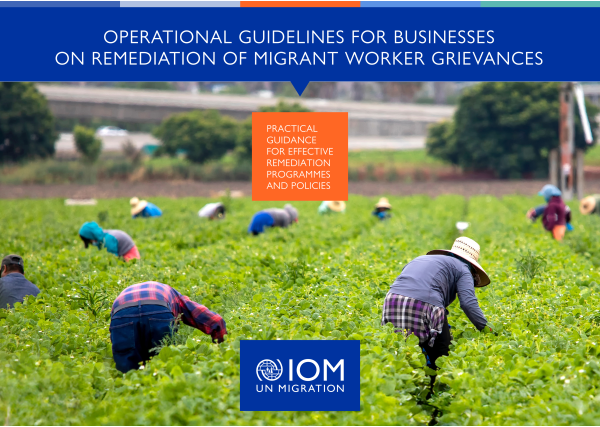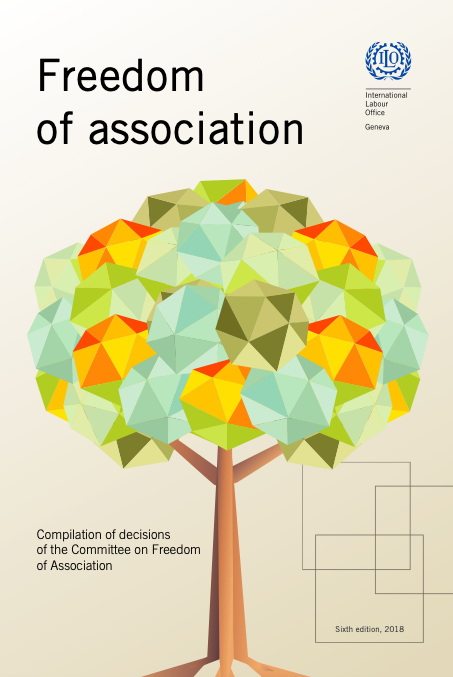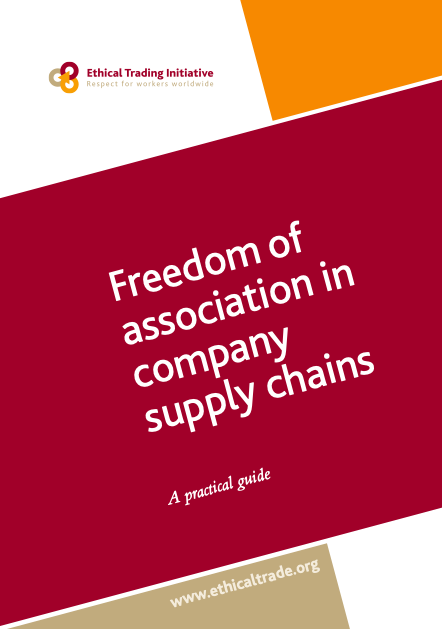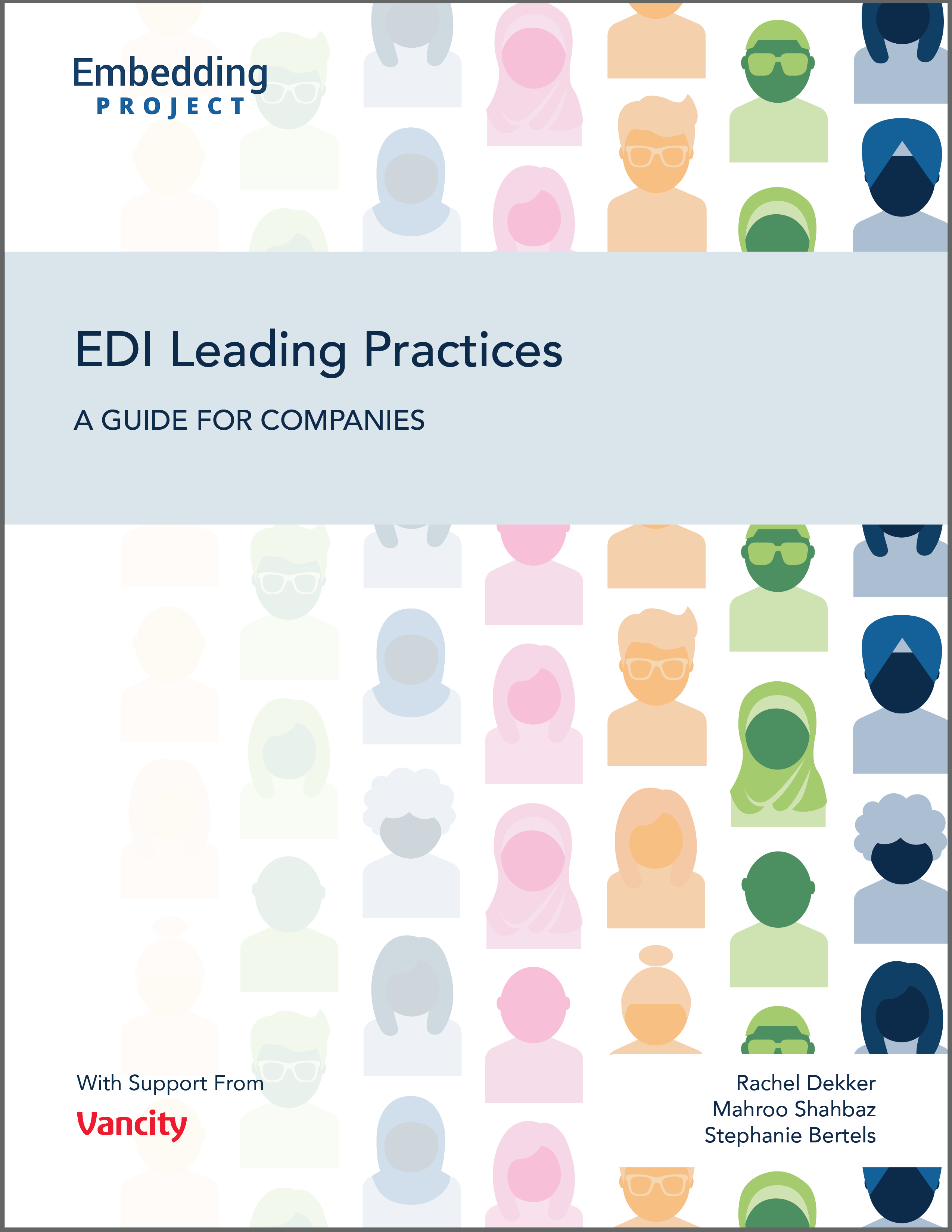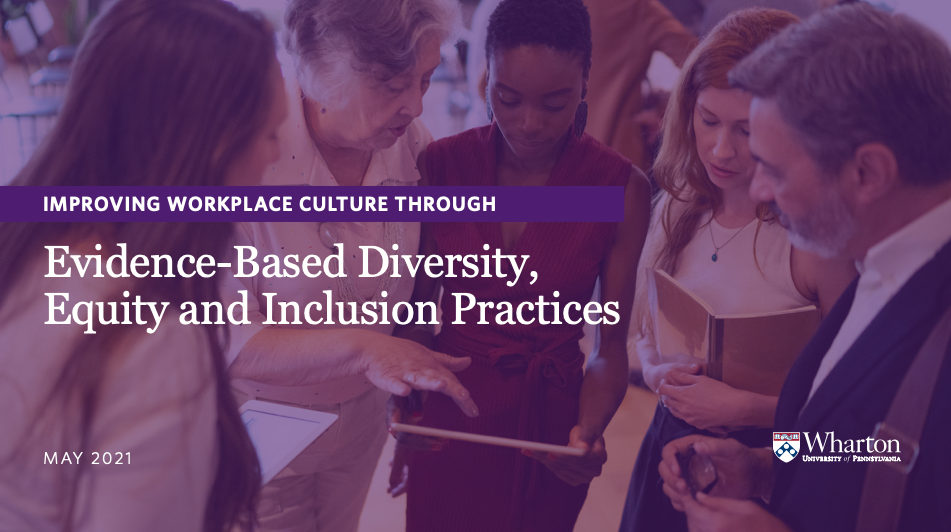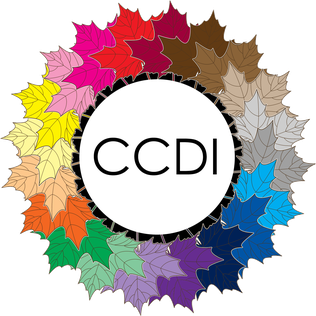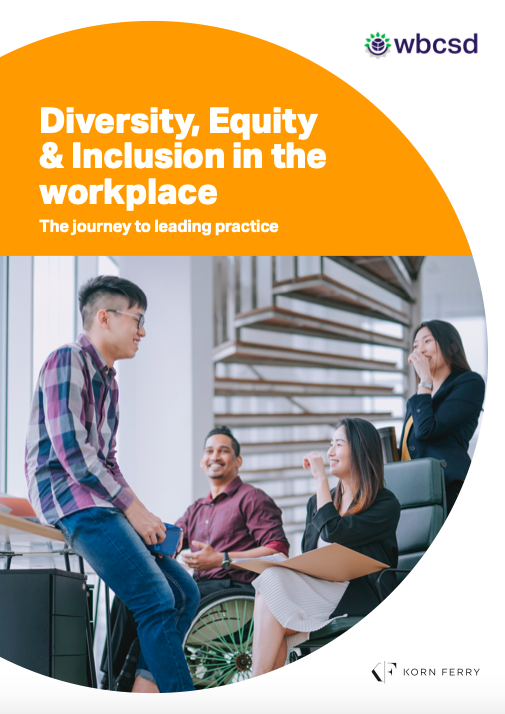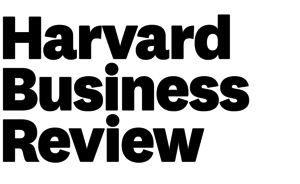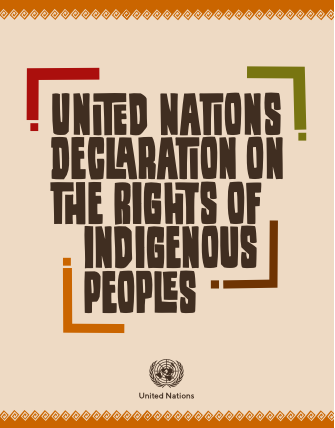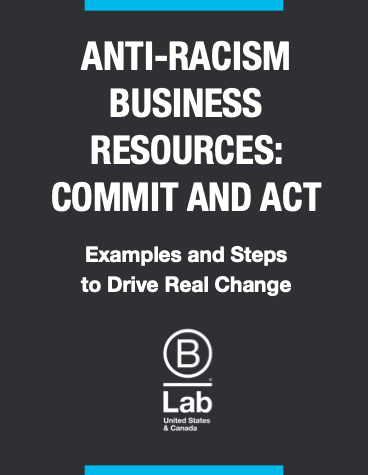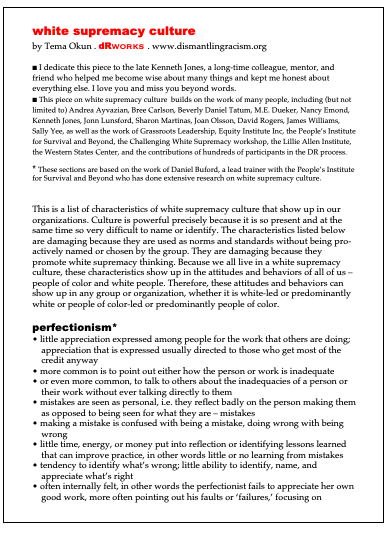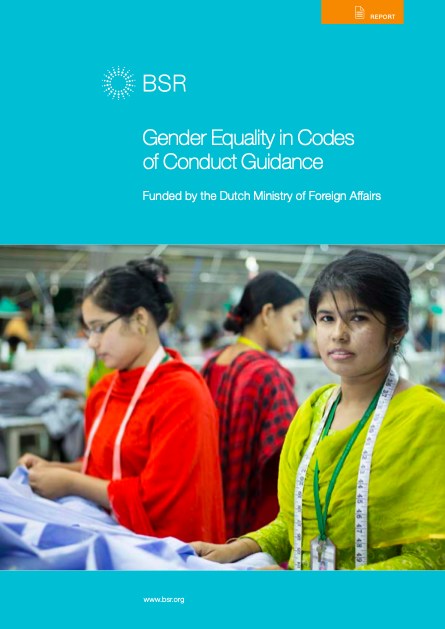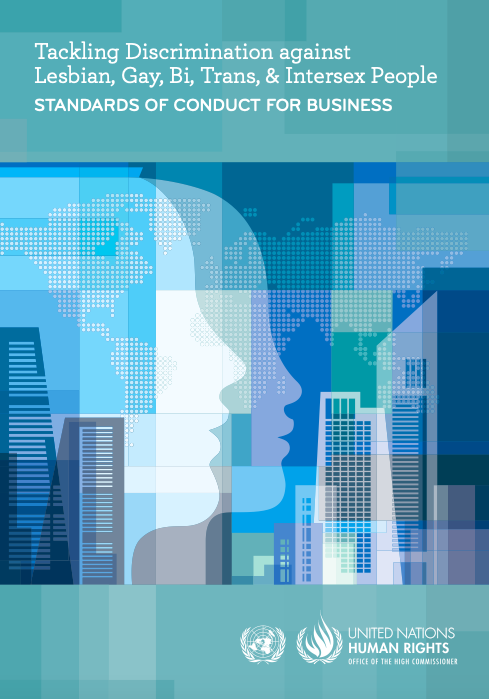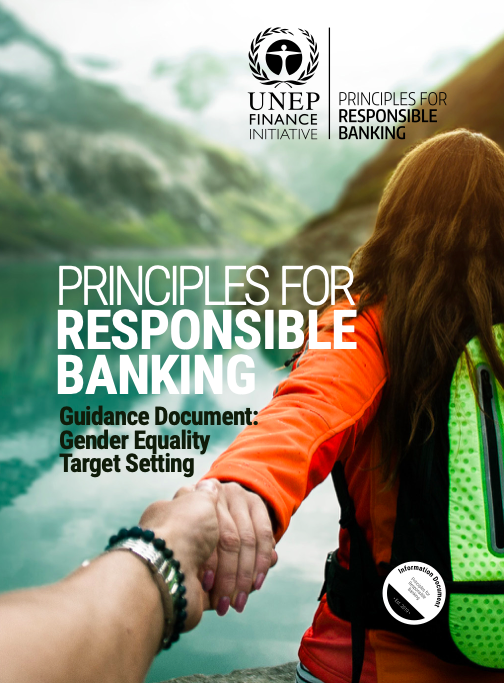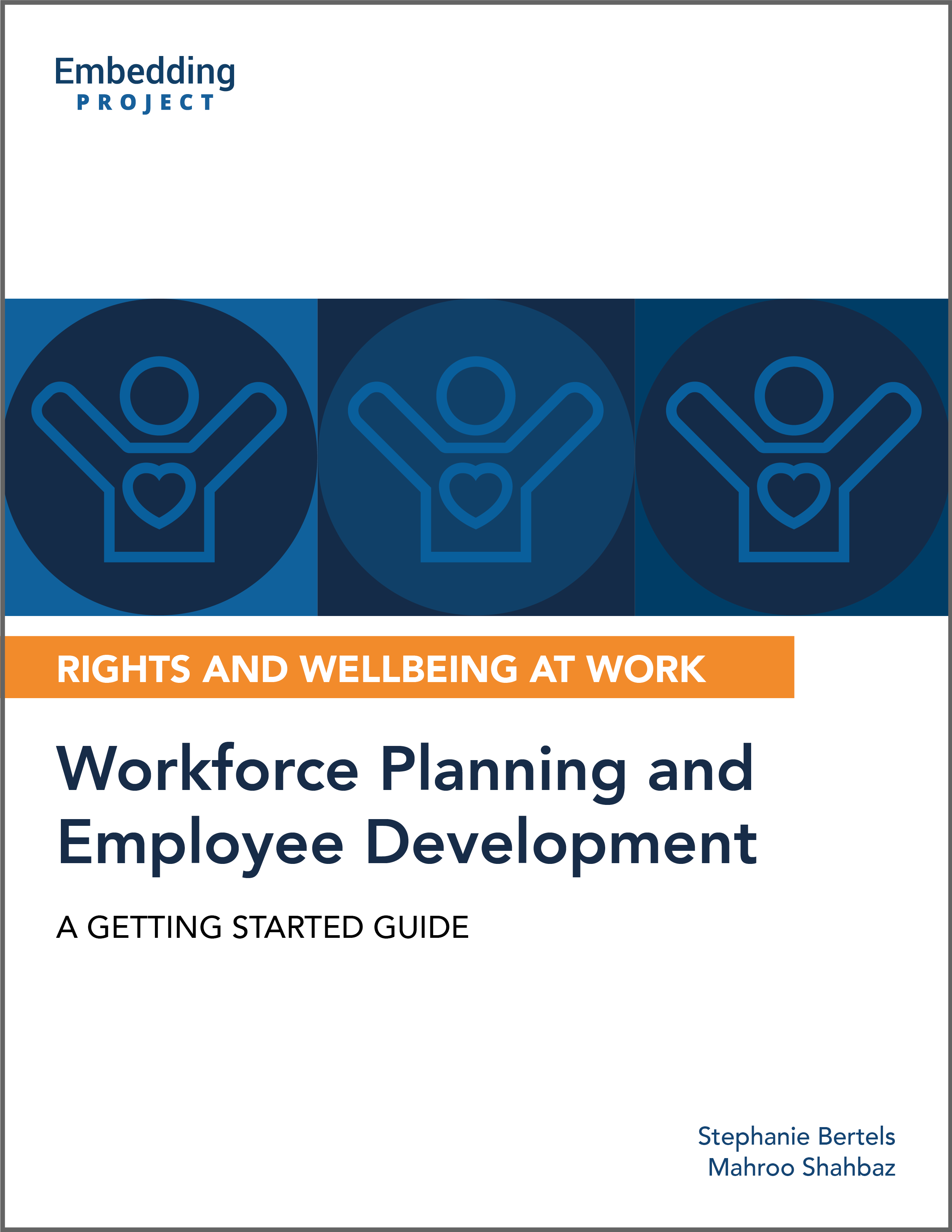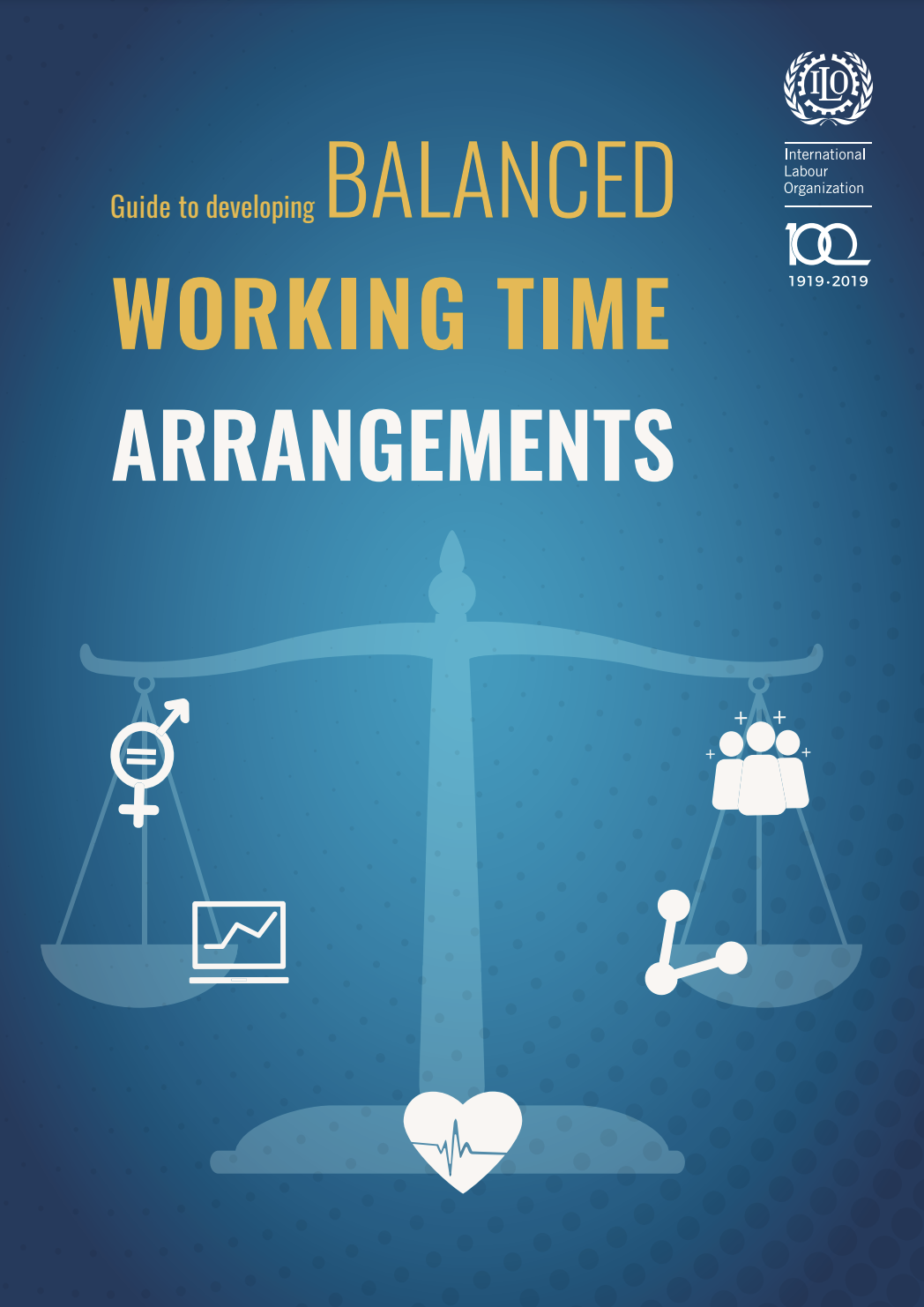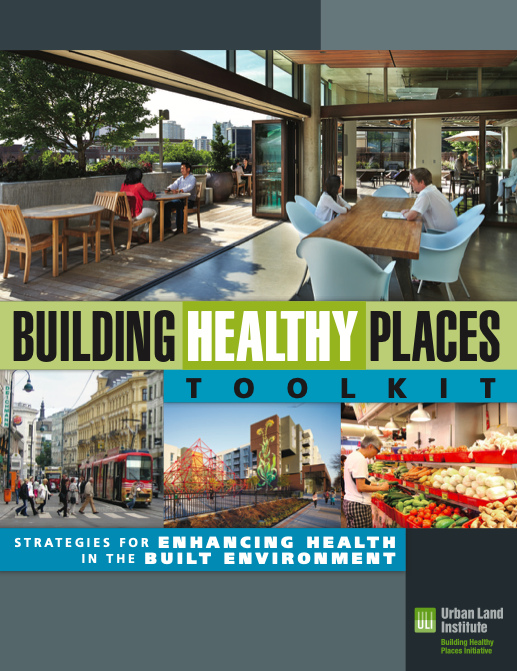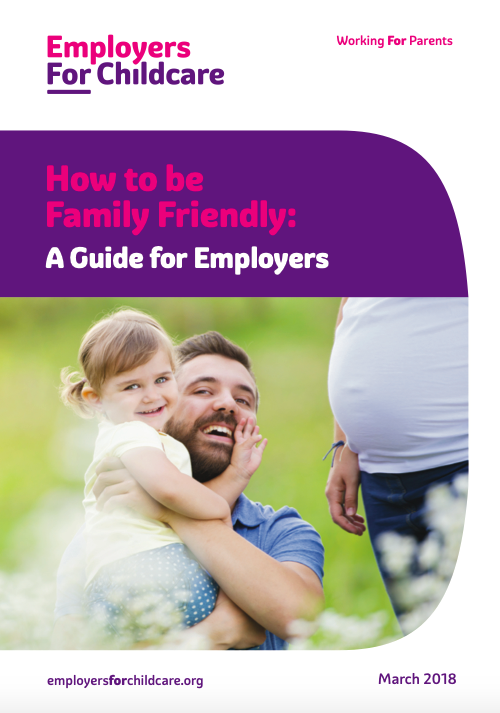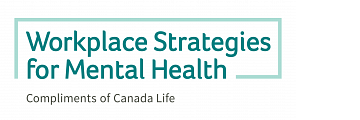Rights and Wellbeing at Work
Description
This includes the human and group rights to which workers are entitled while they are at work, which companies must respect, and which should not be infringed upon outside of work (i.e., post-employment health and wellbeing; family supports). This also includes the workplace culture and conditions companies must create to enable workers’ enjoyment of their rights. All references to workers below include employees, embedded contractors, and those within the value chain.
Share this Issue on:LinkedIn
Resources
Human Rights: A Getting Started Guide
Human rights ensure that everyone can live a life of dignity and respect, without discrimination or deprivation. The full set of rights cover a broad range of topics relevant to business operations and relations. This Human Rights: A Getting Started Guide takes a holistic look at the topic of human rights and aims to support your company in building the foundation for managing human rights risks across your organisation and business relationships.
UN Guiding Principles on Business and Human Rights
The UN Guiding Principles on Business and Human Rights, also known as the “Protect, Respect, and Remedy Framework,” set out 31 principles for states and companies to prevent, address, and remedy human rights abuses committed in business operations and the communities around them. The framework is founded on three pillars: the state's duty to protect human rights; the responsibility of businesses to respect human rights; and access to remedy for victims of business-related abuses. This document is a foundational piece for companies on how to respect and advance worker and community human rights.
UN Guiding Principles Reporting Framework
This reporting framework - and the associated guidance documents from Shift and Mazars - puts corporate reporting on human rights into straightforward language. The framework features a short series of questions to evaluate maturity and progress; implementation guidance; and assurance guidance, which is intended to support internal auditors in assuring companies' human rights performance and external auditors in assuring human rights reporting. These resources will be most useful to sustainability, compliance, and legal teams.
ILO Declaration on Fundamental Principles and Rights at Work
This declaration commits member states to respect and promote four categories of principles and universal rights: the freedom of association and the effective recognition of the right to collective bargaining; the elimination of forced or compulsory labour; the abolition of child labour; and the elimination of discrimination in respect of employment and occupation. These commitments are supported by annual review reports, global reports, and technical cooperation projects that will help you to do your part in achieving the full realisation of the Declaration's objectives.
The Universal Declaration of Human Rights
This milestone document in the history of human rights was proclaimed by the United Nations General Assembly in 1948 as a common standard of achievements for all peoples and all nations. The declaration sets out fundamental human rights to be universally protected, and is widely recognised as inspiring - or making space for - the adoption of more than seventy global and regional human rights treaties.
The International Bill of Human Rights
The International Bill of Human Rights was created to advance the fundamental freedoms and to protect the basic human rights of all people. It is comprised of the Universal Declaration of Human Rights and two international treaties: the International Covenant on Economic, Social and Cultural Rights, and the International Covenant on Civil and Political Rights. These covenants identify the responsibilities placed on nation states to respect, protect, and fulfill those rights.
Corporate Human Rights Benchmark
The Corporate Human Rights Benchmark (CHRB) assesses the corporate human rights policies, governance, processes, due diligence, remediation, and transparency of large, publicly traded companies, as well as their responses to allegations of human rights abuses. The related sector methodologies currently cover the apparel, automotive manufacturing, extractives, food and agricultural products, and ICT manufacturing sectors, but provide helpful insights into what’s considered leading practice no matter what sector your company operates in.
The Corporate Responsibility to Respect Human Rights: An Interpretive Guide
This companion guide to the UN Guiding Principles provides additional background information, interpretation, and explanation of the UNGPs, to help ensure companies have a full understanding of the objectives and intent of the principles.
Business & Human Rights Navigator
This resource is a good high-level introduction to salient issues where business activities intersect with the human rights of workers, including child labour, forced labour, discrimination, living wages, and gender equality. Each of the issues they identify includes a summary; an explanation of the “dilemma” the issue poses for business; key data and trends related to the topic; the related possible impacts on businesses and on human rights; and key thematic resources and guidance for companies.
Social Benchmark
This first ever Social Benchmark from the World Benchmarking Alliance assesses and ranks the world’s 2,000 most influential companies on their responsibility to respect human rights, provide decent work, and act ethically. These companies were assessed against the World Benchmarking Alliance's Social Transformation Framework, and the results reveal that there are significant gaps and areas that companies urgently need to progress on. The Benchmark provides key findings on a range of related topics, including engagement with affected stakeholders; due diligence; commitment to living wages; and lobbying activities. The platform provides a detailed insights report, and all of the Benchmark's results and data are publicly available.
Tackling inequality: An agenda for business action
This flagship report from WBCSD can help you understand why growing inequality is a systemic risk to business and how businesses can address it. Structured into three parts, the report lays out why action on inequality is needed and why it is in the interest of businesses to take action. The second part outlines ten actions businesses can take; for each action, the report explains what the action entails, outlines the business case, and provides many real-world examples. The third part provides a transformation framework to help your business get started in applying the actions covered within your business context. This wide-ranging and detailed report contains insights that will be widely applicable across your organisation, including sustainability, supply chain, HR, finance, and legal departments.
UNGPs 10+ A Roadmap For The Next Decade of Business and Human Rights
Known as the “UNGPs 10+” or “next decade BHR” project, This guide from the Working Group on Business and Human Rights was created to take stock of the implementation of the UN Guiding Principles (UNGPs) and chart a course for action in the decade ahead. The guide visit eight action areas, including business responsibility to respect, access to remedy, more and better stakeholder engagement, and more and better tracking of progress. Each action area includes insights and findings, outcomes needed for the next decade, and illustrative actions for supporting progress towards the goal. This guide will help you to build your understanding for human rights topics of global concern so that you may better prioritise and allocate your resources for creating positive change.
Navigating the Future of Business and Human Rights: Good Practice Examples
This resource looks at emergent and salient issues and will help bring you up to speed on the future of business and human rights. It includes an overview of trends and good practice in relation to seven key themes: the future of work, climate justice, effective remedy and grievance mechanisms, migrant rights, gender equality, due diligence, and tackling working poverty. It also highlights examples of companies from around the world implementing practical solutions to human rights-related challenges.
Investor Toolkit on Human Rights
Many companies find it challenging to apply the UN Guiding Principles throughout their risk management systems. In response, the Investor Alliance for Human Rights has created this guide to help asset owners and managers address risks to people posed by their investments. It unpacks key concepts around causality, impacts, and responsibility, and explains how to put investor responsibility into practice at both the institutional and investment level. It also provides a list of tools such as templates and checklists to support you further.
Indicator Design Tool
Once you have identified and prioritised your human rights risks, you may need help to design an approach to addressing the issue. Shift has created the Indicator Design Tool to support you with developing evidence-based targets and indicators that are focused on preventing, mitigating, and remediating human rights impacts. It employs a 7-step process that is divided into three stages: articulate strategy, account for context, and develop targets & indicators. An in-depth guide is complemented by a template work book.
Corporate human rights due diligence – Getting started, emerging practices, tools and resources
This report by the Working Group on Business and Human Rights focuses on emerging and leading approaches for corporate human rights due diligence and includes learnings and practical insights, recommended actions, good practice approaches, factors that enable change, and a range of tools and resources for those tasked with human rights due diligence oversight or implementation.
Operational Guidance: Workers' Rights
This resource from the Accountability Framework Intiative can help you to understand the scope of your organisation's responsibilities to respect the rights of workers in commodity supply chains; ways to identify impacts to these rights; and actions to ensure respect for these rights. It summarises key workers' rights provisions and provides implementation guidance and links to support. It also identifies roles and responsibilities for commodity purchasers, such as internal capacity building and training, supplier screening and engagement, and remediation of adverse impacts to workers' rights. This resource will be especially beneficial to procurement and sustainability professionals.
Business & Human Rights Regulation Tracker
This tracker from King & Spalding provides a high-level overview of mandatory human rights due diligence - both that which is in force or is expected to come into force in the foreseeable future. It is a helpful tool for senior leaders, legal teams, and change agents who want to ascertain how their organisation may be affected.
A Guide for Integrating Human Rights into Business Management
This technical manual and hands-on toolkit was created to help companies integrate practices consistent with human rights standards into existing management systems. It addresses seven elements common to management systems: strategy; policy; processes and procedures; communications; training; measuring impact and auditing; and reporting. Although this resource is largely focused on compliance, it is helpful guidance for companies that are early in their journey of observing and advancing human rights, both among workers and within communities.
Global Rights Index 2025
The International Trade Union Confederation has created this index to help you better understand the status of worker rights and freedoms around the world. Their flagship report provides ratings for each nation on the degree of respect for workers' rights. It highlights the countries and regions where rights are deteriorating, provides an overview of global trends for workers, and explains the impact of conflicts on workers' rights.
The platform also provides key news items, reports, statements, and other types of information that can help you to better understand the status of fundamental rights and freedoms around the globe.
Strengthening the S in ESG
This collection of resources from Shift can help you better evaluate companies’ social performance. Based on an analysis of almost 1300 social and governance indicators, the authors set out to understand what makes them useful and effective. The findings are presented in two sets of guides. One is a series of “guardrails” explaining what to avoid when designing social performance indicators, and the second is a series of “guidelines” explaining what to aim for when designing indicators. With ongoing efforts to narrow down and standardise sustainability indicators, these considerations must be taken into account to ensure indicators are fit for purpose. This guidance will be useful to all sustainability practitioners involved in measuring social performance.
Applying a Human Rights Lens
This tool from the International Council on Mining and Minerals (ICMM) provides a concise and acceptable understanding of what human rights are, why they are important in a business context, and how a human rights lens can provide a strategically valuable perspective in company decision-making. It identifies ten key elements of a human rights lens, , such as putting the perspectives and voices of potentially affected people at the center of a human rights approach, and integrating the responsibility to respect human rights across the business. This resource will benefit managers and leaders at all levels, and may provide helpful communications content for sustainability professionals.
Although this tool was developed by ICMM, the content is industry agnostic and can be applied to any business context.
The Global Inequality Project
Created to make research and data on global inequality accessible to a broader audience, the Global Inequality Project provides compelling and credible data and strong summaries on a range of social and environmental topics, including global income inequality; global economic governance; unequal exchange; structural adjustment; responsibility for climate breakdown; responsibility for excess resource use; carbon inequality; climate reparations; global poverty; gender inequality; debt and financial outflows; imperial power; and more.
International Human Rights Law: A Short History
The phrase "human rights" is a significant and weighty term that is used in both an abstract, philosophical sense and as a manifestation in law. This article provides a comprehensive, high-level explanation of how the international human rights law landscape came into creation and how it has evolved since then.
Human Dignity and Integrity (Tackling Modern Slavery): A Getting Started Guide
Human rights ensure that everyone can live a life of dignity and respect, without discrimination or deprivation. Anchored in research, our Human Dignity and Integrity (Tackling Modern Slavery): A Getting Started Guide aims to support your company as it begins or revisits a human rights strategy. It helps build a foundational understanding of the issue and provides clarity on the work ahead.
Modern Slavery Act Resources
The Ethical Trading Initiative has compiled various resources to help you understand how your organisation can contribute to the abolition of modern slavery. The website is arranged into six sub-categories including ETI resources such as blogs and training courses; advocacy pieces such as submissions to the Australian and Canadian Governments; guidance and examples, such as a list of published company statements; existing projects, such as the DOL's Child Labor and Forced Labor Program; background research and reports from the ILO, UN, and more; and reports and case studies from a wide range of industries.
Modern Slavery Business & Investor Toolkit
Walk Free is an international human rights group focused on the eradication of modern slavery, and they have created this comprehensive toolkit to help companies support this mission. It includes a modern slavery self-assessment for measuring and benchmarking your organisation's current performance, as well as business guides, videos, learning modules, and research to help you understand and address the problem of modern slavery. It also features case studies, codes of conduct, company policies, and legal frameworks for advancing due diligence, taking corrective action, and providing remedy. This holistic toolkit is an excellent starting point for both junior and senior sustainability and procurement professionals.
Tackling Modern Slavery in Supply Chains
Slavery exists in all stages of procurement, and as supply chains grow and become more complex, it becomes increasingly challenging to ensure freedom, fairness, and safety in the workplace. This resource will help those who want concrete guidance on how to reduce or eliminate the risk of modern slavery occurring in their supply chains. This guide explores effective standards, risk assessments, audits, corrective measures, and practical advice for engaging with suppliers, as well as a comprehensive collection of relevant tools.
Base Code Guidance: Modern Slavery
This guide from the Ethical Trading Initiative (ETI) can help you better understand modern slavery, why businesses have a responsibility to address it, and how they can take meaningful action to end it. It explains the root causes of modern slavery and outlines four steps for applying the ETI Base Code on modern slavery. These include assessing the risk of modern slavery; identifying actions and leverage points; mitigating risk of modern slavery and remediating harms; and monitoring, reviewing, reporting. This practical guide will be most useful to supply chain management and sustainability teams.
Social Auditing and Ethical Certification
This brief by Re:Structure Lab proposes a set of reforms to address key supply chain auditing challenges. These include increasing NGO, union, and worker-led involvement, as well as addressing financial conflicts of interest between auditors and business.
Advancing modern slavery reporting to meet stakeholder expectations
This toolkit was created by GRI and the Responsible Labor Initiative (RLI) to encourage and improve reporting on modern slavery and to support action across the value chain. This toolkit will help change agents to understand why modern slavery has become increasingly important to corporate sustainability reporting, and includes a practical approach for them to report on the issue in alignment with stakeholder expectations. Included are summaries of key slavery-related topics, questions, and concerns; reporting examples; testimonials from reporters and stakeholders; relevant GRI standards guidance; and examples of tools that will facilitate your reporting.
Good Practice Note: Managing Risks Associated with Modern Slavery
This comprehensive good practice note from the Ethical Trading Initiative (ETI) and Ergon Associates can help you better understand modern slavery and how to address it within your business. It provides a background on modern slavery, including root causes and its importance to business. It also shares practical information on relevant standards; how to support internal policy development; how to mitigate risks and handle remediation; and how to conduct monitoring and reporting. It also provides a series of tools, including questionnaires, checklists, and resource lists. This guide will be most useful to supply chain management and sustainability teams.
Business: It's Time to Act - Decent Work, Modern Slavery, and Child Labour
Modern slavery is a human rights violation that is alarmingly widespread. This concise guide from UN Global Compact can help you understand the complexities of modern slavery and the role of business in tackling this pervasive issue. The guide provides an overview of five key steps businesses can take to address modern slavery, as well as three steps specifically focused on ending child labour. It concludes with a list of resources to help get you started, as well as a list of key definitions. The guide will be most useful to supply chain managers, sustainability practitioners, and human rights specialists.
Global Estimates of Modern Slavery: Forced Labour and Forced Marriage
This comprehensive report can help you to better understand the extent of modern slavery within the global economy, as well as trends related to forced labour and forced marriage. It also provides an overview of key actions required to protect citizens and workers.
Combating Forced Labour: A Handbook For Employers and Business
This handbook produced by the International Labour Organisation and the International Organisation of Employers will help you address the risk of forced labour and human trafficking in your operations and supply chain. It consists of a series of seven booklets, offering practical guidance to prevent and remediate these issues. It includes an FAQ reference guide for employers; a set of guiding principles; a compliance assessment checklist; concrete tips for taking action; and a set of case studies. These booklets will be most useful to Sustainability, Human Resource, and Procurement and Supply Chain teams, and may be especially relevant to social auditing practitioners.
Child Labour Guidance Tool for Business
The International Labour Organisation and the International Organisation of Employers created this resource to help you understand and address the risk of child labour in your operations and supply chain. It introduces the issue and explains how it may be relevant to your company; explains how to meet the UNDP’s due diligence requirements; and outlines practical steps companies can take in relation to developing policy, taking action, and communicating performance. This guidance is intended for Sustainability, Human Resource, and Procurement and Supply Chain professionals, and especially those working in the extractive and agricultural sectors.
Corporations are paying for worker abuse audits that are ‘designed to fail’, say insiders
This article from the Guardian can help you understand why social audits tend to be unreliable and ineffective. Based on interviews with professional auditors, it explains how labour abuse along the supply chain can go unreported and unaddressed due to the limited power auditors have and the pressure they face to downplay infractions. It also highlights the broader challenges of the social auditing industry. These firsthand insights will be especially useful to supply chain and sustainability practitioners.
Governing Forced Labour in Chains
This platform can help you understand why modern slavery in global supply chains persists despite continued efforts to eliminate it. The platform features an informative blog exploring the issue, as well as various research outputs, including reports, briefs, and presentations produced by GFLC. This platform will be most useful to supply chain and sustainability practitioners, and especially those in Canada; some resources specifically focus on the Canadian legal context.
Profits and poverty: The economics of forced labour
US$236 billion in annual profit is generated from forced labour, globally. This study from the ILO can help you understand the source and scale of these illegal profits at global, regional, and sectoral levels. The first section provides background information on forced labour, including illegal profit estimates; section two describes the methodology employed to estimate illegal profits; section three presents the estimation results; and section four takes a closer look at profits arising from the unlawful recruitment fees. These insights will be most useful to sustainability, supply chain, and risk management professionals
Tackling Child Labor: A Guide for Financial Institutions
This joint publication by Shift, The Centre for Child Rights and Business (The Centre), and UNICEF captures some of the key take-aways from a peer-learning session of Shift's Financial Institutions Practitioners Circle (‘FIs Circle’) on the topic of child labour. Drawing on the experience of the three organisations working with real-economy companies and financial institutions, this resource highlights ways for banks to more strategically evaluate and improve portfolio company capacity to address child labour. It explains salient child rights risks for banks and financial institutions and explores three ways in which they can strengthen current approaches to addressing child labour risk in line with the UN Guiding Principles for Business and Human Rights: improving screening for indicators of child labour risk, improving engagement with portfolio companies on action on child labour, and participating in multi-stakeholder initiatives that include action on child labour.
Climate Change & Modern Slavery Hub
This map-based database can help you understand how climate change and climate migration enable different types of human exploitation that fall under the umbrella of “modern slavery." The resource brings together many existing reports, addressing factors that increase vulnerability to modern slavery in the context of climate change. It allows you to explore these reports regionally through an interactive map as well as through six filter options, including “type of modern slavery," “type of migration," and “type of climatic event." This resource can be used to support supply chain risk identification, which will be most useful to supply chain and sustainability practitioners whose organisations' have global sourcing footprints.
The Due Diligence Toolkit for Fair Recruitment
This fair recruitment toolkit from the Global Business Network on Forced Labour can help you to set out a due diligence process when hiring workers from abroad. Designed with SMEs in mind, the toolkit is divided into five sections with step-by-step guidance that can help you to build a framework for fair recruitment; understand recruitment needs and risks; work with agents and other third parties to mitigate risks; track progress; and deal with problems and grievances effectively. This toolkit will be especially beneficial to hiring managers and other recruitment and HR professionals.
The Dindigul Agreement
This resource from Re:Structure Lab can help you to understand Worker-Driven Social Responsibility (WSR) agreements - a key tool for combatting forced labor, gender-based violence and harassment, and overlapping human rights and labor abuses in supply chains. The brief highlights the key elements of WSR agreements to ensure they can be supported – and not undermined – by regulatory approaches, and uses the 2022 Dindigul Agreement as one such example. The Dindigul Agreement was pioneered by an independent majority Dalit trade union in India run by women and comprises a set of legally binding agreements with major apparel companies. This resource will be especially beneficial to procurement professionals, sustainability professionals, and others parties responsible for raising labour standards in supply chains.
Rights Lab
The University of Nottingham's Rights Lab is the largest group of modern slavery researchers, and home to many leading modern slavery experts. The Rights Lab has four research programmes: Measurement and Geographies; Health and Communities; Law and Policy; and Business and Economies. Through these programmes, the Rights Lab delivers new and cutting-edge research that provides rigorous data, evidence, and discoveries for global anti-slavery efforts. The Rights Lab produce academic publications, reports, and briefings on a broad range of relevant topics, such as modern slavery prevalence estimations, the impact of immigration policies on human trafficking, regulation and governance gaps in the detection of labour exploitation, methods for preventing exploitation, and more. They produce video case studies, podcasts, toolkits, maps, and more, and also provide services for developing strategic responses to modern slavery risk, deep analysis and risk assessments, and best practice recommendations.
Dhaka Principles on Migration with Dignity
Companies around the world depend on migrant labour, and yet these workers are frequently exploited. To ensure they are respected through every step of the recruitment and employment process, the IHRB developed the Dhaka Principles - a set of human rights-based principles to ensure and enhance the rights of these individuals. If you are looking to create a more fair, just, and equitable environment for migrant workers, these ten principles provide a strong starting foundation.
Ending Violence and Harassment in the World of Work
ILO Convention No. 190 (C190) is the first international treaty to recognise the right of everyone to a world of work free from violence and harassment, including gender-based violence and harassment. Although it is intended for national governments to implement, its adoption has implications for business sustainability. The core principles and accompanying video series will be particularly useful for sustainability, legal, and compliance professionals tasked with preventing and addressing violence and harassment in the workplace.
Responding to Violence Against Women: Guide for Companies
CARVE has created this guide to shed light on ways for companies to address violence within the workplace. It includes business practices, recommendations, and policies for preventing and responding to violence against women. This resource will help business managers in particular to identify cases of violence, interact openly and empathetically with those who are suffering, and raise awareness on the subject.
Outsmarting our brains: Overcoming hidden biases to harness diversity’s true potential
Despite years of good intentions and organised efforts to foster a diverse and inclusive work environment, many companies are still struggling to grow and capture the benefits of fair organisational management. This short guide from Ernst & Young (EY) and the Royal Bank of Canada (RBC) explores the implications of hidden biases in today's work environment. It explains hidden bias, including how it emerges and manifests, and highlights ways in which it can affect behaviour in the workplace. This resource is a good starting point for identifying and challenging hidden biases when recruiting and promoting, and includes a list of simple questions, tips, and actions for identifying and correcting such discrimination.
Unconscious Bias
Everyone is susceptible to unconscious biases that subtly influence our interactions and activities. In this article, Neal Goodman explains how biases present themselves in the workplace in the form of prejudices and discrimination. By bringing awareness and attention to these issues, employees can be trained to help change their organization's narrative. Goodman presents eleven tips that leaders should keep in mind when developing these programs to better guarantee their success.
Handbook: Addressing Violence and Harassment Against Women in the World of Work
The UN Women handbook on Addressing Violence and Harassment Against Women in the World of Work compiles policies, practices, and frameworks relevant to organizations in the private and public sector across every continent. The information is most useful to actors seeking practical guidelines on implementing preventative measures and solutions aimed at building and maintaining healthy and safe spaces for women.
Reclaiming Power and Place: The Final Report of the National Inquiry into Missing and Murdered Indigenous Women and Girls
The National Inquiry’s Final Report is a landmark document that reveals that persistent and deliberate human and Indigenous rights violations and abuses are the root cause behind violence against Indigenous women, girls, and 2SLGBTQQIA people in Canada. This report is comprised of truths and testimonies from family members, survivors of violence, experts, and Knowledge Keepers, and culminates in 231 individual Calls for Justice directed at governments, institutions, social service providers, industries, and all Canadians.
This document will help to familiarise you with Indigenous people's context of multigenerational and intergenerational trauma and marginalisation when engaging with, investing in, and supporting their communities and businesses.
Women's Safety in the Workplace Toolkit Guide
This toolkit from BSR’s HERproject and the Confederation of Indian Industry’s Centre of Excellence for Sustainable Development (CII-ITC CESD) can help you prevent and address sexual harassment in your operations and value chain. It explains what sexual harassment is, where it happens, five reason why businesses should address it, and the different forms of harassment. It also outlines how to use the toolkit and what it includes, such as training decks for managers, supervisors, and workers, as well as step-by-step guides for creating anti-harassment policies and grievance mechanisms. This resource will be most useful to supply chain management and HR practitioners.
Migrant Worker Management Toolkit: A Global Framework
This flexible toolkit from BSR can help you better manage migrant worker issues across diverse business contexts. It is based on a three-step framework for developing a comprehensive migrant worker orientation program. This framework includes understanding the key issues and risks affecting employers and workers in your business context; finding a credible, independent external organisations to support the development of the orientation program; and building capacity within operations by educating workers on their rights and available grievance mechanisms. This highly practical toolkit offers relevant standards, examples, checklists, questions, and recommended actions for each step, and will be most useful to supply chain practitioners and facility managers.
Migrant Worker Guidelines for Employers
This guidebook from the International Organisation for Migration (IOM) provides practical guidance that can help you to recruit and employ international migrant workers ethically and responsibly. This guidance aligns with international human rights and labour standards and frameworks on international migration and build on the United Nations Guiding Principles on Business and Human Rights.
The guidelines are divided into four parts: understanding migrant workers and the labour migration process; building a labour migration management system; managing the labour migration process; and supporting tools that include checklists, guidance notes, and other useful documents that can help you to develop and implement the system, principles, and practices necessary for managing the labour migration process. These guidelines will be particularly beneficial to HR professionals and personnel actively engage with migrant workers.
Human Trafficking and Business: Good Practices to Prevent and Combat Human Trafficking
This report from the UN can help you better understand the issue of human trafficking and the role of business in addressing it. The first section provides an overview of what human trafficking is, why it is important to business, and how businesses can prevent it. The second section features a series of case studies that highlight the practical actions companies are taking to fight this abuse.
Although this resource is more than decade old, the good practices outlined remain relevant today for supply chain and sustainability practitioners.
Base Code Guidance: Child Labour
This guide from the Ethical Trading Initiative (ETI) can help you better understand child labour, why businesses have a responsibility to address it, and how they can take meaningful action to end it. It explains the root causes of child labour and outlines four steps for applying the ETI Base Code on child labour. These include assessing actual and potential risk of child labour; identification of corporate leverage and responsibility, decision-making, and actions needed; mitigation of risk and remediation for child workers in cases of ETI Base Code violations; and monitoring implementation and impact. This practical guide will be most useful to supply chain management and sustainability teams.
Business and Child Labour
This resource page from the International Labour Organisation (ILO) can help you align your businesses operations with international labour standards on child labour. It provides a brief overview of the issue and acts as a central hub linking to the ILO’s expansive coverage on the topic. These include key resources, ILO publications on eliminating child labour, and relevant webpages and initiatives. These resources will be most useful to sustainability and supply chain management practitioners.
Child Labour: Global Estimates 2020, Trends and the Road Forward
This joint publication from the ILO and UNICEF can help you understand the status of global efforts to end child labour. The report outlines child labour trends around the world, including data that highlights the regions and sectors in which child labour is most prevalent. It explains how COVID-19 has undermined progress on the issue, and provides a range of solutions to prevent further regression and spur improvements. This resource will be most useful to sustainability and supply chain management practitioners.
Safe and Healthy Working Conditions: A Getting Started Guide
A safe and healthy workplace is a fundamental right for workers. Anchored in research, our Safe and Healthy Working Conditions: A Getting Started Guide aims to support your company as it begins or revisits its health and safety strategy. It helps build an understanding of the issue, its interlinkages with climate, and provides clarity on the work ahead.
ISO 45001: Occupational Health and Safety Standard
ISO 45001 specifies requirements for an occupational health and safety (OH&S) management system and provides guidance for its implementation. These guidelines are applicable to any organisation that wants to establish and maintain effective OH&S measures to eliminate hazards and minimise risks and system deficiencies.
Occupational Safety and Health in Sectors and Industries
If you are searching for news, research, or other information on labour-specific topics (e.g. wages, fair recruitment, decent work, etc.), this is a good place to start. The International Labour Organisations' is a one-stop shop for work-safety related resources. Their platform includes international labour standards, codes of practices, training materials, good practices, reports, and papers and policy briefs, and also provides sector-specific content.
Guide to Writing an OHS Policy Statement
This resource from the Canadian Center for Occupational Health and Safety will help you to create an effective health and safety policy statement. It explains the types of issues that your policy should cover, key considerations, and includes an example of a policy checklist for reviewing new and existing OHS policies. The checklist is a good starting point for an OHS policy draft. It provides key prompting questions and includes essential topics and issues that need to be addressed. It also includes tools that will help you to introduce the policy, ensure that its objectives are clearly communicated and well-received, and create specific safety-related roles within the workplace. Although this resource was created for the Canadian context, the content is appropriate for any geographic or industrial context.
WELL Building Standard
This research-informed resource from the International WELL Building Institute (IWBI) can help you to create and support thoughtful and intentional spaces that enhance human health and well-being. WELL draws upon the expertise of medical professionals, public health experts, building scientists, and thousands of other practitioners and WELL users to advance the quality of life of workers. The standard addresses ten key concepts such as air, light, thermal comfort, movement, and materials in the workplace, and provides evidence-based recommendations for performance-testing and optimisation.
Framework for Corporate Action on Workplace Women's Health and Empowerment
This report from the UN Global Compact provides a four-step framework for both buyers and suppliers that will help you to address women's health, advance protection from violence and harassment, and support their economic empowerment. It provides recommendations, rationaltes, and examples throughout, as well as references to other relevant resources.
Nine Business Practices for Improving Safety and Health Through Supply Chains and Building a Culture of Prevention and Protection
This brief from the United Nations Global Compact and the International Labour Organisation identifies nine practices that your business can implement to advance decent work and improve occupational health and safety (OH&S). This document may be of particular use for managers, safety supervisors, HR personnel, and change agents who are overseeing or supporting OH&S activities in countries with insufficient employment injury protection measures.
Occupational Safety and Health in Global Value Chains Starterkit
This kit from the International Labour Organization (ILO) can help you advance the health and safety of workers in your value chain. It features a user guide that explains the overall structure and methodology, as well as a detailed four-step process (value chain selection, value chain mapping, value chain analysis, and intervention design). Each step includes learning objectives, defined outputs, methods, and a list of supportive tools. The kit also also provides training materials and exercises for each of the four steps, and a case study demonstrating the roll-out for this process. This guidance will be most useful to supply chain management and sustainability teams, especially those working on the ground with suppliers.
Lancet Countdown on Health and Climate Change data explorer
This dashboard from the Lancet Countdown can help you understand the impacts of climate change on human health and the economy through data visualisation. It assesses a wide range of topics, including climate health hazards, adaptation measures, the health co-benefits of mitigation, the financial cost of climate change, and trends in the discourse around climate and health. This is a good resource for sustainability and enterprise risk managements teams that need to communicate climate impacts to business leaders, peers, and suppliers.
Psychological Safety in Practice: A Guidebook for Managers
This guide from the CEO Health + Safety Leadership Network can help you become a psychologically safe leader. It provides practical tips, tools, and insights on four areas of psychological safety. This includes the process of developing a work environment where people feel respected and heard; creating a sense of purpose and belonging by building connections and managing emotions; supporting mental health and resilience; and adopting a personal growth mindset that destigmatises failure. The guide also features a set of real-life scenarios that offer practical advice from experts. Although designed specifically for managers, this resource will be useful to senior leaders as well. HR practitioners may also find it a useful tool to reference and share internally with managers and leaders.
Ensuring safety and health at work in a changing climate
This report from the ILO can help you understand the effects of climate change on worker health and safety. It presents evidence on the health consequences of seven key climate impacts, including excessive heat, UV exposure, air pollution, and vector-borne disease. For each impact, it explains the risk to worker health and safety and provides examples of how the risk can be mitigated. These insights will be most useful to HR and supply chain practitioners.
Fair Compensation: A Getting Started Guide
Workers have a right to just and favourable remuneration for their work. Inadequate compensation exacerbates poverty, deepening many social and environmental issues. Anchored in research, our Fair Compensation: A Getting Started Guide aims to support your company as it begins or revisits a fair compensation strategy. It helps build a foundational understanding of the issue and provides clarity on the work ahead.
Upholding the Human Right to a Living Wage is Essential for Business
In this blog post we explore the human right to a decent living to help you to understand why it is relevant for companies and how you can get started on your living wage journey.
Global Living Wage Coalition
The Global Living Wage Coalition (GLWC) is a partnership between two independent networks with complementary missions and work: the Anker Living Wage and Income Research Institute (Anker Research Institute) and the GLWC Action Network (Action Network). They provide a comprehensive explanation of the Anker Methodology for measuring a living wage, and they have compiled a broad range of case studies for living wage implementation.
Roadmap on Living Wages
IDH, The Sustainable Trade Initiative, has created this platform to help you take tangible steps towards aligning your company's compensation with international living wage standards. The platform introduces a 5-step approach: identify the living wage; measure living wage gaps; verify calculations of gaps; close living wage gaps; and share learnings. For each step you will find primers, FAQs, and tools - such as benchmarks and auditor guidelines - to help you progress through the process.
The Roadmap is supported by an Action Guide offering dynamic recommendations for how different supply chain actors can collaborate to close living wage gaps
The Living Income Community of Practice
The Living Income Community of Practice is a partnership between The Sustainable Food Lab, GIZ, and ISEAL. Their goal is to support activities that help smallholder farmers achieve a living income and a decent standard of living. The resources on this platform can help you to understand the difference between a living wage and a living income; understand and calculate living and actual incomes; and identify and discuss strategies for closing the income gap.
A Living Wage Roadmap for Large Employers
This guide from Vancity explores their journey towards becoming a certified Living Wage Employer (LEW). It includes details of their 7-step process, identifies leads for spearheading each phase, and lays out the timeline for Vancity's LEW journey. The tangible and actionable content in this guide will especially benefit business leaders, change agents, and procurement personnel who are ready to advance from embracing LEW in principle to enacting it in practice.
The Platform Living Wage Financials (PLWF)
The Platform Living Wage Financials (PLWF) is a coalition of investors supporting the payment of living wages in their investee companies and associated value chains. Their work - including a living wage assessment methodology - can help your company measure and monitor progress on living wages across your operations and value chain. Their living wage assessment guidance document would be of particular benefit to sustainability and supply chain management teams tasked with supporting the implementation of living wages.
Worker Debt and Inequality
This brief from Re:Structure Lab can help you to better understand how worker debt has become a critical, consistent element of business models configured around forced labour and human trafficking. The brief explains how supply chain workers are routinely paid at or below the minimum wage, oftentimes owing to wage theft, fraudulent deductions, predatory fees, and inadequate legal protection. It also explores solutions for addressing worker debt and inequality, such as alternative forms of corporate accountability mechanisms; reparations for historical injustice; debt relief; and more.
Living Wage Analysis Tool
The UN Global Compact has created this free tool to help you identify actions and further opportunities for your company to provide a living wage. The tool showcases good practices for ensuring a living wage in business operations and supply chains, and features questions based on real-life company practices and international standards and indicators. This tool is a good starting point for assessing current policies and programmes, highlighting areas for improvement, and identifying opportunities to set future corporate goals and targets.
The Case for Living Wages: How Paying Living Wages Improves Business Performance and Tackles Poverty
Too many business continue to see living wages as a burden and challenge rather than an opportunity. This paper from Business Fights Poverty, CISL, and Shift explains the benefits that living wages provide to businesses and investors, including within core operations, value chains, and the wider operating environment. This resource can help you to better understand the need for a living wage (both for workers and firms), and features recommendations, key questions, and a five-step approach that can help your company to take action.
Achieving the Living Wage Ambition: Reference Sheet and Implementation Guidance
This accessible guide from the UN Global Compact can help you to successfully implement a living wage programme. Part of the UN Global Compact SDG Ambition Accelerator Initiative, the Living Wage Ambition encourages companies to provide and promote a living wage as an essential aspect of decent work to ensure all workers, families, and communities can live in dignity. This guide outlines the Ambition; identifies companies that are taking credible action; and provides a step-by-step roadmap for implementation, including an overview of the key organisational structures, processes, and strategies needed to implement a living wage programme.
Improving Wages to Advance Decent Work in Supply Chains
This interactive resource from the UNGC is an excellent primer on the topic of decent wages in the supply chain. It explains the context of living wage discussions; explains the rationale for businesses to take action on wages in their supply chains; explains the factors that have combined to keep these wages low; and more. This resource also provides guidelines on concrete steps that your company and your suppliers can take to improve wages globally.
Effective wage auditing to advance living wage action: Research briefing to inform practice
This report from ISEAL an help you better understand the wage auditing landscape. The first section outlines the key challenges around wage auditing and verification related to both internal practices as well as external standards and audit protocols. The second section highlights emerging best practice related to wage auditing.
Living wage: An emerging standard
Although the subject of fair pay has received a marked increase in attention, few businesses have mature practices in place to ensure workers receive a living wage. This brief report by PwC and the WageIndicator Foundation can help you understand the challenges and opportunities related to paying a living wage at a global scale. Based on a survey of 205 participants from companies around the world, it covers the emerging expectation around living wages, key challenges, key drivers, associated trends, and next steps. This report will be most useful to sustainability and supply chain practitioners.
Living Wage Accounting Model and Progress Tool
This tool from Shift and the Capitals Coalition was created to help you disclose your efforts to achieve a living wage for workers. Featuring three short guides, the tool provides a means to measure and articulate progress towards payment of a living wage for employees, contractors, and workers in the first tier of the supply chain.
How to Pay Living Wages
This detailed case study from the Post Growth Guide can help you understand how to pay a living wage. The guide follows the methodology used by a company that makes beaded jewellery in Guatemala. Although the company is small, it provides a practical example of the process and key considerations that are broadly applicable at the manufacturing level. This includes how the company defines a living wage and how it calculates a piece rate living wage. This resource will be most useful to sustainability and supply chain management teams, especially those whose organisations make use of labour-intensive production in low wage regions.
Living Wages in Global Supply Chains: A new agenda for business
This report from the Ethical Trade Initiative can help you to understand the wages landscape and your position and leverage within that landscape. The report outlines why a new agenda on global supply chain wages is necessary; provides root cause analysis of low wages within the value chain, across the national labour market, and at the enterprise level; explores what success - in the form of developing wage benchmarks - would look like; explains why sector-wide collaboration and collective bargaining is necessary for reversing adverse impacts on global wages; and more. This resource will be especially useful for sustainability, HR, and procurement professionals.
Company-Worker Relations: A Getting Started Guide
Maintaining good company-worker relations provides clear business benefits. Strong relationships, open communication, effective grievance mechanisms, and workers’ ability to engage in their rights to freedom of association and collective bargaining underpin the realisation of many other fundamental principles and rights at work. Anchored in research, Company-Worker Relations: A Getting Started Guide, will help your company understand how to build strong company-worker relationships and respect workers’ right to organise by explaining key concepts, linking to key actors, and outlining the work ahead.
Stakeholder Engagement: A Good Practice Handbook for Companies Doing Business in Emerging Markets
This handbook from the International Finance Corporation was created to support company engagement with stakeholder groups "external" to core operations, such as affected communities, local government authorities, and other affected parties. It is divided into two parts: key concepts and principles of stakeholder engagement, and integrating this engagement with the project cycle. In the first part is a useful section on grievance management, which highlights key insights and offers practical advice on managing and resolving dissatisfaction and disputes. This section may be of help to project managers who want to take a proactive approach to preventing grievances from arising and to effectively and equitably resolving them when they emerge.
Grievance Mechanism Toolkit
This toolkit by the Compliance Advisory Ombudsman (CAO) can help you implement operational-level grievance mechanisms in different sectors. It aims to provide practical guidance on how companies with limited time and budgets can enable community members to raise concerns. The toolkit clearly outlines the business case for implementing grievance mechanisms; explains the purpose of grievance mechanisms and how to design and implement them effectively in your local context; and features a repository of best practice tools and techniques. This toolkit will be most useful to compliance, operations, and supply chain management teams.
Community grievance mechanisms in the oil and gas industry
This comprehensive manual was created by Ipieca to provide step-by-step guidance for the design and implementation of operational-level grievance mechanisms, as well as the design and management of corporate-level frameworks for resolving community grievances. The manual draws upon the practical experiences of seven pilot projects created by Ipieca member companies, as well as shared learning from Ipieca members and stakeholders, and will be of particular benefit to operations managers, project managers, policy-makers, and other leaders responsible for managing relations with community partners.
Although this manual was created by and for the oil and gas industry, the manual includes an expansive array of instructions and helpful grievance mechanism tools that can be applied to a broad range of industry and operations contexts.
Grievance Mechanism Toolkit: Practical guidance for companies in supply chains on how to implement effective grievance mechanisms
This toolkit, developed for Reckitt by the Oxfam Business Advisory Service, can help you to design and implement effective site-level grievance mechanisms across your supply chain. The first part explains grievance mechanisms, including best practices, benefits, and limitations, and the second part provides a comprehensive, step-by-step approach that covers the planning, design, and implementation of effective grievance mechanisms. This resource will be especially beneficial to professionals who have a role in managing stakeholder grievances, including site managers, HR managers, safety and security managers, and other professionals with responsibility for labour issues.
Access to Remedy - Principles
These principles from the Ethical Trading Initiative can help you to protect and enshrine the rights and freedoms of vulnerable workers, and especially those of migrant workers. They address foundational principles; the roles and responsibilities of companies; the roles and responsibilities of governments; the rights and responsibilities of workers; and the role and benefits of third parties.
Access to remedy - Practical guidance for companies
This guide from the Ethical Trading Initiative can help you to better understand, prevent, and respond to labour rights abuses. It provides a 4-step approach to ensuring access to remedy in supply chains and features practical advice, tools, and examples to help businesses address labour rights abuses and develop effective remediation strategies in line with the UN Guiding Principles. This includes developing and supporting mechanisms that enable workers to report concerns and rights abuses, known as Operational Grievance Mechanisms (OGM).
ITUC legal guide for setting up an operational-level grievance mechanism for the world of work in the context of business and human rights
This guide from the International Trade Union Confederation provides an overview of the principles and measures to be considered by businesses and workers’ organisations when setting up a non-state-based operational-level grievance mechanism to provide access to justice and remedy for workers, including workers in supply chains. This guide is based on internationally recognised human rights and principles, and it specifically highlights the role of the ILO as the constitutionally mandated international organisation and the competent body to set and deal with international labour standards. The guide highlights the criteria for ensuring an effective non-state-based operational-level grievance mechanism and explains key elements in establishing such mechanisms, including those that specifically address grievances arising from business activities in global supply chains.
Operational Guidelines for Businesses on Remediation of Migrant Worker Grievances: Practical Guidance for Effective Remediation Programmes and Policies
This guidance from the International Organization for Migration (IOM) can help you to develop voluntary programmes to remediate migrant worker grievances, and especially regarding human rights issues faced by migrant workers in international supply chains. Aligned with international human rights and labour law standards and frameworks on international migration, this resource outlines operational and practical steps your company can take in the development of remediation programmes and related policies, including step-by-step guidance; tools and templates for the implementation of the guidance; and key policies for effective remediation programmes.
This resource is part of a two-part resource package. Its companion resource, the Handbook for Businesses on Remediation of Migrant Worker Grievances, outlines the theoretical underpinnings and technical aspects of the remediation guidance.
Handbook for Businesses on Remediation of Migrant Worker Grievances: Conceptualizing Grievance Mechanisms in the Ecosystem of Remedy
This handbook from the International Organization for Migration (IOM) IOM's Remediation Resource Package and provides practical guidance to businesses on the remediation of migrant worker grievances. Aligned with international human rights and labour law standards and frameworks on international migration, it outlines the theoretical underpinnings and technical aspects of the guidance offered by this resource package. This includes providing an overview on what a remediation programme is; the purpose of remediation programmes; key principles of remediation programmes; operational-level grievance mechanisms; and more.
This resource is part of a two-part resource package. Its companion resource, the Operational Guidelines for Businesses on Remediation of Migrant Worker Grievances, outlines the operational and practical steps that companies can take in the development of remediation programmes and related policies.
Worker grievance mechanisms: Guidance document for the oil and gas industry
This guide from Ipieca can help you to develop and implement effective worker grievance mechanisms across workplaces and project sites. It provides useful insights into entry points to worker grievance mechanisms; an overview of grievance mechanism stages and procedures; and ways to manage complaints from workers employed by third parties. It also provides examples of good practices from Ipieca members and other industries that have enabled workers to speak up and have their concerns acknowledged and addressed.
Although created with the energy sector in mind, this guidance is applicable to organisations from across the industry spectrum.
Freedom of Association and Development
This guide will help you to understand freedom of association and the pivotal role it plays in fostering and maintaining sustainable development. The document outlines how respect for freedom of association can contribute to development outcomes by looking at the benefits it provides in four key areas: inclusive economic growth and poverty reduction; a positive business environment; crisis response; and democracy and governance. It also includes case studies that demonstrate the positive effect that freedom of association can have when governments, trade unions, and employers work together.
Freedom of association - Compilation of decisions of the Committee on Freedom of Association
Informed by decisions from over 3,200 cases related to freedom of association and the protection of trade union rights, this compilation from the Committee on Freedom of Association will help you to understand the rights and civil liberties of employers' organisations and unions; the rights of workers to establish and join organisations, without authorisation and of their own choosing; to draw up their own rules and elect their own representatives; to engage in collective bargaining and strikes; and more.
Freedom of association and the right to collective bargaining: a guide for brands
This guide from the Fair Wear Foundation offers practical guidance that can help you to improve your own practices and policies in support of freedom of association in the workplace and the right to collective bargaining. It explains the fundamentals of freedom of association, the right to collective bargaining, and the threats and barriers they face; highlights key steps that organisations can take to promote freedom of association (including at the system level) and social dialogue; and showcases tools that can support your efforts, such as a questionnaire for suppliers and templates for non-retaliation letters and sample violations. This resource will be particularly beneficial to change agents, human resource professionals, and senior leaders.
Freedom of association in company supply chains
This guide from the Ethical Trading Initiative may help you to identify and understand the impacts of your operations on freedom of association. It features a six-step "quick start" guide to supporting freedom of association: setting the policy; exercising due diligence; establishing the current situation; developing and implementing the action plan; monitoring; and pursuing continuous improvement. It also features a sample policy commitment and a supplier self-assessment for freedom of association to help you get started.
Freedom of Association
This collection of resources from the International Center for Not-for-profit Law (ICNL) shows how protecting civic space supports peoples’ right to freedom of association. It features over 20 reports, articles, and guides that can help you understand the legal, regulatory, and financial supports needed to support freedom of association. It also provides a list of relevant legal instruments from the UN and regional bodies.
Although the ICNL has a civil society focus, the resources provided will also be useful to those addressing human rights issues from within the private sector.
Respecting Trade Union Rights in Global Value Chains: Practical Approaches for Business
This report from the Shift Project and FNV Mondiaal provides practical ideas and tools for improving labour conditions in your value chain. It focuses on credibly addressing the fundamental rights of freedom of association and collective bargaining – jointly referred to as union rights. It includes a tool to identify trade union rights risk and includes recommended avenues to address specific risk factors. It also provides eight real world examples demonstrating how other companies have approached the issue. This guidance will be particularly useful to sustainability, procurement and supply chain management, and legal teams.
FOA & worker representation: company guidance
This resource from the Ethical Trading Initiative can help you to support freedom of association, collective bargaining, and progress worker representation. It introduces a five-step roadmap for supporting independent worker representation and trade union relationships, including reviewing and refining internal policies on workers' rights and protections; identifying risks to workers' rights and protections; developing strategy for supporting and investing in workers' rights; communicating and remediating; and acting to embed, improve, and consolidate. Each step in this resource includes specific guidance with a summary of recommended actions. This resource will be especially beneficial to legal, HR, and communications professionals.
Tools and resources for Business on Freedom of Association
This list of resources from the ILO can help you better understand freedom of association. It lists seven tools covering topics such as collective bargaining, unionisation, and migrant worker rights. It also provides a list of relevant international laws. These resources will be most useful to HR, legal, and supply chain management departments, especially in organisations that operate in areas with weak labour standards.
Social Dialogue Report 2024: Peak-level social dialogue for economic development and social progress
This comprehensive report from the International Labour Organisation can help you to understand the benefit and importance of peak-level social dialogue (PLSD). PLSD involves a set of institutions and processes that bring together representatives from government, industry, and workers’ organisations to facilitate negotiation, consultation, and information exchange on issues relating to labour, economic, and social matters.
The report is divided into five chapters and explains how PLSD is an essential force for sustainable economic development and social progress; decent work; fair income distribution; an effective and inclusive digital and green transition; and social justice. The report draws on case studies, industrial relations data, a global review of PLSD processes and outcomes, and a perceptions survey of employers' and workers' organizations in 38 countries. This resource provides a wealth of information for professionals engaged in company-worker relations.
Understanding and Building Effective Social Dialogue
This e-book from CNV International and their partners can help you understand how to engage employees to develop a common understanding and make decisions together. It explains the internal communication method known as social dialogue that can be used to develop plans for improving employee wellbeing, avoid misunderstandings, prevent internal conflicts, and resolve problems by finding common ground. The book provides practical steps on how to initiate and manage the social dialogue process. For a quick introduction to social dialogue and links to additional resources see here.
Respectful, Equitable, and Inclusive Workplaces: A Getting Started Guide
Companies need to take action on eliminating discrimination and make conscious efforts to ensure that their workforce feels respected and included within their organisation. Anchored in research, our Respectful, Equitable, and Inclusive Workplaces: A Getting Started Guide summarises our work in the EDI Leading Practices: A Guide for Companies and aims to support your company as it begins or revisits an inclusive workplace strategy. It helps build a foundational understanding of the issue and provides clarity on the work ahead.
EDI Leading Practices: A Guide for Companies
Workplace equity, diversity, and inclusion (EDI) is a complex and rapidly evolving space, and increasingly, companies are interested in understanding how to meaningfully advance EDI in their organisations. To help them do so, we consulted EDI research and guidance, reviewed practices of over 100 companies, and sought input from practitioners across a range of industries and geographies. Our Equity, Diversity, and Inclusion Leading Practices Guide offers a comprehensive framework with practices, case studies, and resources to help organisations embed EDI into their strategy, structures, and culture.
Tools and Resources for Business on Non-Discrimination and Equality
The International Labour Organization's tools and resources for business on non-discrimination and equality provides guidance that will help you support equity related to gender, age, HIV/AIDS status, and disabilities, as well as understanding the rights of Indigenous and tribal peoples.
Improving Workplace Culture Through Evidence-Based Diversity, Equity and Inclusion Practices
This report, completed by researchers led by Stephanie Creary at The Wharton School of the University of Pennsylvania, explores the relationships between workplace culture and business outcomes. It presents results from the U.S Distributed Workforce Sample, which serve as a foundation for informing managerial action on diversity, equity, and inclusion, and provides key findings and recommendations for middle managers responsible for implementing related initiatives. If you or our organisation are new to effecting DEI-related change, this research may help you to fine-tune the focus of your actions.
Inclusive Workplace Competencies
This paper from the Toronto Region Immigrant Employment Council (TRIEC) can help you and your team develop the competencies needed to build a more diverse and inclusive workforce. The guide lays out a set of 15 diversity and inclusion competencies that are categorised into three spheres of influence: “within myself," “within my team," and “within my organisation, workplace, or community." Each competency outlines the performance criteria required to demonstrate competence. In addition, foundational knowledge underpinning each competency is identified, and brief examples of what the competency might look like in practice are provided. This resource is most relevant to HR and DEI practitioners, especially in areas where the workforce increasingly consists of immigrants.
Canadian Centre for Diversity and Inclusion
The Canadian Centre for Diversity and Inclusion (CCDI) has created a range of reports, resources, and toolkits to help you with advancing equity and challenging racism in the workplace. These resources include leadership and workplace guides that focus on creating inclusive and safe spaces, as well as step-by-step toolkits that explain how to navigate race in the workplace and develop a diversity and inclusion strategy. Although much of the CCDI's content is written from a Canadian context, most of their insights and lessons are universally relevant.
Diversity, Equity & Inclusion in the workplace: The journey to leading practice
This report from the World Business Council for Sustainable Development (WBCSD) explores some of the key DEI challenges faced by companies from WBCSD's Future of Work working group. It presents the case for focusing on and advancing DEI in the workplace; explores solutions that the companies in WBCSD's working group have implemented in their pursuit of leadership in this space, with a specific focus on identifying and sharing practical approaches to building more progressive workplaces; and explores emergent leading DEI practices and some of the factors that enabled successful mainstreaming.
Tackling inequality: The need and opportunity for business action
This short report is a good introduction to inequality, and can help you to better understand the responsibility and opportunity that your business has to support positive change. Developed by the Business Commission to Tack Inequality, the report explains how inequality is an urgent systemic risk for business, highlights the case for business action, and presents a six-part agenda for action.
Workplace Diversity & Inclusion: What Every MBA Needs to Know
This primer provides a helpful high-level summary of diversity and inclusion that will benefit executives, board members, and other business leaders. It explains the present-day context of diversity and inclusion, both within the workforce and in senior leadership roles; and highlights both the risks of inaction and the opportunities provided by advancing DEI, such as by improving hiring practices, advancing managerial accountability, and creating and supporting employee resource groups.
7 Metrics to Measure Your Organization’s DEI Progress
This article from HBR that will help you gather data needed to track your organisation’s progress towards managing your people fairly, based on merit. Grounded in the author’s first hand experience, it proposes seven key metrics spanning the employee life cycle. These are: attrition, performance, promotions, leadership pipeline, employment pipeline, pay equity, and inclusion. The measurement framework provided will be most useful to HR departments within organisations committed to addressing Diversity, Equity, and Inclusion (DEI).
Racial Equity Tools
Racial Equity Tools has compiled a vast library of resources that can help you to understand and advance racial equity within your organisation. The library is arranged into four broad "themes," including fundamentals, such as core concepts, the history of racism and movements, data, and resources; planning that examines key issues, such as economic security and language justice; acting to find strategies and advocate for ending structural racism and advancing social change; and evaluating progress and results.
Corporate Racial Equity Tracker
Just Capital's Corporate Equity Tracker provides a way for people to easily access and view the racial equity commitments and actions taken by organisations. Once on the website, users will have the ability to sort their searches based on the company, industry, number of employees, or policies.
United Nations Declaration on the Rights of Indigenous Peoples (UNDRIP)
Adopted by the General Assembly in September 2007 by a majority of 144 states in favour, the United Nations Declaration on the Rights of Indigenous Peoples establishes a universal framework of minimum standards for the survival, dignity, and well-being of the Indigenous peoples of the world, and elaborates on existing human rights standards and fundamental freedoms. The declaration provides a trajectory for advancing lasting reconciliation with Indigenous peoples, and it should be used to inform any statements, policies, or practices related to Indigenous Peoples that your organisation is developing and implementing.
2021 CEO Blueprint For Racial Equity
This resource from PolicyLink provides a roadmap that can help companies understand and address the intended and unintended consequences of their products, policies, and practices on people of colour. The guide seeks to advance racial equity by providing key recommendations across three domains of corporate influence: within the company, within relevant communities, and at the societal level. It also includes profiles of companies whose work is advancing equity in these three spaces. This guide is a good starting point for leaders and agents of change who want to advance their business from simply "not racist" to deliberately and credibly "anti-racist."
Anti-Racism Business Resource: Commit and Act
This guide from B Lab can help your business adopt anti-racist business practices. The first section introduces the role of business in tackling racism, and the second section highlights actions you can take using examples from the B Corporation community. It includes recruiting and hiring practices, understanding the history of systemic racism and unconscious bias, and practicing allyship. The insights provided will be most beneficial to Human Resource practitioners.
White Supremacy Culture in Organizations
This guide from the Centre for Community Organizations will help you spark conversations about oppressive culture in your organisation. It describes five dimensions of white supremacy culture that fuel exploitative behaviours and decision-making. These include the narrow view of perfectionist culture; paternalism; the practice of concentrating - and refusing to share - power; defending the status quo; and avoiding the discomfort of confronting racism. This resource also features practical guidance on how to counter white supremacy culture. This guide will be most useful to change managers, sustainability professionals, and HR practitioners seeking to positively influence the underlying cultural frameworks that guide decision-making.
White Supremacy Culture
White supremacy culture can manifest in subtle ways within the workplace, such as through perfectionism, defensiveness, paternalism, and individualism. This primer will help you to understand and better identify problematic attitudes and behaviours, and to proactively build a more inclusive, collaborative, and supportive environment.
What Companies Can Do to Combat Systemic Racism Against Black Colleagues in the Workplace
The physical, emotional, and economic safety of Black Americans is constantly threatened by the participants and beneficiaries of systemic racism. This article, written by JUST Capital, presents a list of concrete and actionable steps that people within organizations can take to address systemic racism and support the physical, emotional, and economic safety and security of Black Americans. Five primary actions are presented, including supporting the Black Lives Matter Movement; providing a safe and supportive work environment; assessing the workforce; examining practices; and conscientious recruitment.
How To Build an Anti-Racist Company
Action is the key difference between being not racist and being anti-racist. This article can help leaders to reimagine their approach to developing a fully inclusive culture. Adapted from the book Anti-Racist Leadership, this article introduces 7 proactive steps that can help you to get started in rooting out discrimination and advancing equity in the workplace.
Women's Empowerment Principles
Established by the UN Global Compact and UN Women, The Women's Empowerment Principles (WEPs) serve as guidelines that will help your leaders, HR professionals, and change agents to promote gender equality and empowerment in the workplace. Adopting these principles involves six main stages: Consider, Sign, Activate, Engage, Sustain, and Report. Towards helping you understand and progress through these stages, the WEPs has created a comprehensive brochure that features tools, examples, insights, and other resources.
Global Gender Gap Report 2025
This comprehensive report from the World Economic Forum can help you understand the current state of gender parity and its evolution over time. The first part benchmarks the gender gap, including performance by income level and region, progress over time, and the speed of progress. The second part explores the shifting dynamics of economic and political participation through the lens of gender, examining how these spheres intersect, evolve, shape, and are shaped by gender differences. This guide will be most useful to senior leaders and HR professionals interested in understanding and challenging gender inequity within their business and beyond.
Progress on the Sustainable Development Goals: The Gender Snapshot 2024
This annual report from UN Women and UN DESA provides a comprehensive analysis of gender equality progress across the Sustainable Development Goals, and can help you to better understand how the world is failing to achieve gender equality. It highlights trends in extreme poverty, food insecurity, violence, and more, and explains how the vulnerability of women and girls will be exacerbated by climate change. The report advocates for (and provides recommendations for) an integrated, holistic approach to advancing gender equality, and will be of particular benefit to sustainability and strategy professionals who want to better align their company's positions, goals, and actions with the work that much be done to advance gender equality globally.
UN Women Digital Library
This library from UN Women provides briefs, manuals, guides, discussion papers, case studies, and more on a wide range of topics relating to gender equality and the empowerment of women, including economic empowerment, ending violence against women and girls, employment, leadership and political participation, and more.
Gender Equality in Codes of Conduct Guidance
This guide from BSR provides a framework for the implementation of good working conditions, and in particular for women. It explores the topic of mainstreaming gender equality, and especially within codes of conduct, and introduces nine principles that will help you to integrate gender equality considerations into the standards you use both internally and within your supply chain. Each principle features a summary, case studies, and recommended revisions and opportunities for leadership.
The gender gap in employment: What's holding women back?
This resource from the International Labour Organisation provides an approachable introduction to the gender gap in the labour force, relating to employment rates, wages, available opportunities, and more. This is a good primer for helping executives and senior leaders to better understand the persistent challenges and barriers that women face, the pressures they face to conform to gender role expectations, and their employment-related preferences.
UN LGBTIQ+ Standards Gap Analysis Tool
This free tool will help you to strengthen policies and processes that advance LGBTIQ+ inclusivity and tackle discrimination within the workplace. lt uses a gap analysis methodology and questionnaire to provide recommendations based on the maturity of your journey.
Tackling Discrimination against Lesbian, Gay, Bi, Trans, & Intersex People: Standards of Conduct for Business
This guide was created to support rights-affirming interactions between companies and a wide range of stakeholders, and it is a good starting point for businesses looking to review or establish policies and practices that respect and promote the human rights of LGBTI people. It provides five concrete steps, examples of best practices, case studies, and other practical guidance to companies on how to respect and support the rights of LGBTI people in the workplace, marketplace, and community. The standards are grounded in existing international human rights law and align with the UN Guiding Principles on Business and Human Rights.
Transgender Inclusion in the Workplace: A Toolkit for Employers
This toolkit from the Human Rights Campaign Foundation can help you to make your company safer for and more inclusive of transgender persons. It covers a range of policies and practices you can apply to improve inclusivity in your organisation’s day-to-day operations, including best practices for navigating gender inclusion in gendered spaces; proactive gender transition guidelines; inclusive healthcare coverage; and addressing organisational culture through training and education. There is also an extensive section reserved for examples that illustrate the everyday realities of transgender inclusion. The guidance will be especially useful to Human Resource departments and any roles responsible for championing and advancing diversity and inclusion.
Breaking barriers: Unconscious gender bias in the workplace
Pressure is mounting on businesses to pursue social equity and to address and reduce disparity in opportunities within the workplace, but many companies struggle to identify and prevent the causes. This research note from the International Labour Organization can help you to better understand unconscious gender bias and the barriers it creates for women’s career advancement, as well as how to mitigate and overcome the effects. The report explores how such bias manifests in the workplace and includes methods, metrics, and training tips for addressing the issue.
Principles for Responsible Banking Guidance Document: Gender Equality Target Setting
This document will help you to begin setting credible goals around gender equality in the workplace. It introduces high-level steps, such as establishing baselines, and includes examples of the philosophy and process behind conceiving and delivering upon such gender equality-related targets.
Although this document focuses on setting targets for gender equality within the context of retail banking, the principles and examples are broadly applicable.
Empowering Women at Work: Company Policies and Practices for Gender Equality
This resource from the ILO and UN Women can help you to promote gender equality in your workplace. It focuses on five key areas where companies can contribute: achievement of equal pay for work of equal value, prevention and elimination of violence and harassment, creating a harmonious work-life balance for both women and men equal representation of women in business and management roles, and investment in a future of work that works for women. Each section highlights key international labour standards, guiding principles for companies, and illustrative practices.
Accelerating Systemic Change Toolkit
This comprehensive toolkit from the UN Global Compact was created to help you advance gender equality, diversity, and inclusion within your organisation.
The toolkit is divided into three sections. The first features a consultation report that provides qualitative and quantitative data on the gendered impacts of the pandemic, explains the challenges women in the workplace are navigating, and hightlights how other identity factors - such as race, age, and immigration status - can further complicate their professional ambitions and experience in the workplace. The second section features reminders and tips for building capacity for gender equality work and ensuring that more women (or members of other equity-deserving groups) rise to hold leadership roles. The final section features a series of case studies of organisations responding to the challenges and barriers identified by women and non-binary individuals in the consultation sessions.
Women in the Workplace 2025
Since 2015, McKinsey & Company has conducted annual studies on the state of women in corporate America. This report consolidates these findings to provide insights into workplace gender diversity trends and solutions. It is divided into three sections: the first explores women's experiences, including key trends; the second explores representation within the corporate pipeline, the seeming state of decline in corporate commitments to advance women, and best practices at high-performing companies; and the third features solutions for better ensuring fairness of opportunity and creating and promoting an inclusive culture.. This resource will be most useful to HR teams.
Navigating the Rollbacks in Protection of Reproductive and LGBTQI+ Rights in the United States
This new report from BSR is a practical resource for financial institutions and anyone seeking to engage them on reproductive and LGBTQI+ rights in the US context. The report explores the rollbacks of human rights protections across the US; explains how financial institutions may impact abortion and LGBTQI+ rights (specifically discussing data practices, handling of law enforcement requests, lobbying efforts, inequitable provision of financial services, and other potential impacts); highlights the material risks that result from failing to respect reproductive and LGBTQI+ rights; and provides a 5-step principles-based approach (and case studies) for navigating compliance with the law while respecting human rights.
Although created for financial institutions, the topic is relevant to organisations in all sectors, and much of the content is industry agnostic.
Reaching Further: ProtectDefenders.eu Annual Report
Human rights work remains a high-risk activity around the globe. Threats and violence against human rights defenders (HRD) have increased, as well as judicial harassment and criminalisation. This annual report from ProtectDefenders.eu explains the challenging contexts in which human rights defenders endeavour to build resilience in communities and the workplace. It explains the mechanisms and strategy that permeate ProtectDefenders.eu's work; highlights notable (and concerning) patterns of oppression, populism, and violence facing civil society; and highlights regional and national shifts impacting human rights defenders' initiatives. It also explains programmes in action that your business can support.
What is DEI? Market Signals of Diversity, Equity, and Inclusion
This report from Rights CoLab can help you better conceptualise diversity, equity, and inclusion (DEI) and how it can be measured. Based on a study of 21 DEI frameworks, the report outlines a methodology and shares insights on common themes found across the frameworks. It also examines the different groups that are targeted as beneficiaries of DEI efforts, highlighting how existing frameworks continue to overlook those at greatest risk of exploitation, and provides recommendations for addressing these gaps. This resource will be most useful to change agents, HR professionals, and supply chain managers.
Inclusive Language Guide
This comprehensive guide from Oxfam can help you understand how to reframe your language to be more inclusive. It takes a critical look at language and how it can be used to empower new narratives and challenge problematic ideas. The guide explores a range of themes, including the power of language; feminist principles for language use; disability, physical, and mental health; gender justice, sexual diversity, and women’s rights; migrations; and race, power, and decolonisation. For each theme it provides examples of how you can put inclusive language into practice in writing and day-to-day conversation. This resource may be especially useful to communications specialists and HR teams that can use it to inform employee onboarding and training.
Ally: A Title You Earn Through Action
This article from B The Change can help you understand how you can be an ally to marginalised groups. It outlines five individual level actions you can take to create an environment of acceptance in your workplace and beyond. These actions are: understand your privilege; listen, empathise, and learn; amplify marginalised voices; support local communities; and speak up and act. This guidance is widely applicable, and will especially benefit change agents working in organisations that have recognised and voiced the need to improve inclusivity.
Disability in sustainability reporting
This guide by Disability Hub Europe can help you make your organisation more inclusive of disabled persons. It covers the role of business in strengthening disability inclusion across the value chain and provides technical guidance for disclosing disability issues in alignment with the latest GRI Standards (as of 2023). This resource will be most useful to your sustainability and human resource departments.
Harnessing the Power of Age Diversity
This article explores how a lack of trust between older and younger workers contributes to a culture of resentment that sows division and impacts productivity. It offers a four-part framework to help you manage an age-diverse team and better integrate their skills, knowledge, and networks. This framework includes identifying assumptions, adjusting your lens, taking advantage of differences, and embracing mutual learning.
Neurodiversity as a Competitive Advantage: Why you should embrace it in your workforce
Employers often overlook the candidacy of people with neurological conditions, despite the extraordinary skills they may bring to the workplace. This article explains the benefits of pursuing and accommodating neurodivergent talent, and explores why companies often fail to recruit and support these peoples. It also highlights HR programs and efforts to access neurodiverse talent, including the use of non-interview assessment processes, setting up support systems, and scaling and mainstreaming neurodiversity programs.
Hiring Justice-Involved Talent: Practical Steps to Becoming Second Chance Employers
This roadmap published by the Responsible Business Initiative for Justice (RBIJ) can help you understand the benefits of recruiting persons with criminal records – an inclusive practice known as Second Chance Hiring (SCH). The roadmap is grounded in three pillars: business and employer education; identifying the right community-based organisations and re-entry partners; and workforce development for Second Chance employees. This tool will be most useful to HR teams interested in developing more inclusive hiring practices.
Due diligence in the downstream value chain: case studies of current company practice
This guide by The Danish Institute for Human Rights can help you address human rights risks in your downstream value chain. This includes how your product or service is used by customers and end-users; the working conditions in your distribution network; and end-of-life impacts. The guide explains downstream value chains and their importance, potential human rights issues, and how companies can address them. It also provides a series of seven case studies demonstrating downstream human rights due diligence in practice. These insights and examples will be most useful to sustainability, logistics, and supply chain management teams.
Disability Equality Index: Best Practices Collection
This collection of best practices assembled by Disability:IN can help you to better understand how to advance disability inclusion in your organisation. The collection features over 170 practices from companies participating in the Disability Equality Index (DEI). It showcases leading examples and promising practices that all companies can learn from, regardless of how far along they are in their disability inclusion journey. These practices are grouped into eight categories: culture, leadership, enterprise-wide access, employment practices, community engagement, supplier diversity, global operations, and getting started with disability inclusion. This resource will be most useful to HR practitioners.
Investing in Inclusion: A handbook for businesses on disability-inclusive education, training, and employment
This handbook from Global Business Coalition for Education (GBC-Education) will help you understand how your organisation can improve education, training, and employment for young people with disabilities. It begins with an overview of disability inclusion. Then it lays out the multiple overlapping ways businesses interact with persons with disabilities and the actions they can take to support inclusion. Next, it shows how to foster an inclusive workplace and provide disability-inclusive education and training. Lastly, it highlights the opportunity for business to serve unmet needs of the large consumer base that is made up of persons with disabilities. This resource will be most useful to HR professionals and anyone seeking to advance disability inclusion.
Understanding advantaged groups' opposition to diversity, equity, and inclusion (DEI) policies: The role of perceived threat
This article can help you to better understand opposition to DEI policies. It explains that three types of perceived threat can explain advantaged groups' opposition to DEI policies: resource threat, or concern about losing access to outcomes and opportunities; symbolic threat, or concern about the introduction of new values, culture, and expectations; and ingroup morality threat, or concern about their group's role in perpetuating inequality. This resource will be particularly beneficial to sustainability practitioners and HR professionals.
Male Allyship Toolkit: A Resource for Building Inclusive Workplaces
This comprehensive guide from the HeForShe Alliance has created this resource to help you foster an inclusive environment within the workplace and support men to be allies in pursuit of equality. Rooted in the transforming patriarchal masculinities (TPM) approach, the toolkit encourages men to respectfully disrupt social and institutional structures that privilege men and offers a set of tools, strategies, and insights for building collaborative allyship practices that make a workplace more inclusive. The toolkit is divided into three key steps to support organisations at any stage of their male allyship journey: introducing male allies, developing an active network of male allies, and supporting male allies to make lasting change. The toolkit also offers practical case studies from HeForShe Alliance members that share practical strategies, successful initiatives, and lessons learned in promoting gender equality and supporting male allies. This guide will benefit employees at all levels within organisations, but especially those who seek to deepen their understanding of gender issues and their broader societal impacts.
Workforce Planning and Employee Development: A Getting Started Guide
Businesses need to ensure that they have the right workers with the right skills in place to successfully deliver on their corporate and sustainability goals. They need to anticipate their future workforce needs and put in place a strong talent development strategy to address any skills gaps in a shifting labour market. Anchored in research, our Workforce Planning and Employee Development: A Getting Started Guide aims to support your company as it begins or revisits a talent management and development strategy. It helps build a foundational understanding of the issue and provides clarity on the work ahead.
The Future of Jobs Report 2025
This comprehensive insight report from the World Economic Forum can help you to understand how key macrotrends are expected to impact jobs and skills in the near future, as well as the workforce transformation strategies that employers plan to implement in response. Bringing together the perspective of over 1,000 leading global employers, the report examines the global labour market landscape in 2025; drivers of labour-market transformation, including technological change, geoeconomic fragmentation, economic uncertainty, demographic shifts, and the green transition; the jobs outlook, including total job growth and loss and the expected impact of macrotrends on employment; the skills outlook, including expected disruptions to skills, drivers of skill disruption, and reskilling and upskilling strategies; workforce strategies; and region, economy, and industry insights.
Workforce planning factsheet
This factsheet from the Chartered Institute of Personnel and Development (CIPD) can help you to better understand the benefits of workforce planning. It explains workforce planning as a concept, outlines the different stages in the workforce planning process, and identifies key actions for implementing effective workforce planning. Beyond workforce planning teams, this is a good introductory resource for operations professionals and managers.
Strategic Workforce Planning 101: Framework and Process
This guidance from the Academy to Innovate HR (AIHR) provides a quick overview of strategic workforce planning. It offers a four-step framework, explains additional planning models and tools that may further support the work, and breaks down the components of the strategic workforce planning process.
Good Practice Note: Managing Retrenchment
This good practice note from the International Finance Corporation can help you to develop a retrenchment plan to better plan for and manage significant job losses. It makes the case for getting retrenchment right; highlights key steps in planning and managing retrenchment; explains the importance of consultation, both on the development and implementation of retrenchment plans; and more. This resource will be especially beneficial to managers, senior leaders, and HR professionals.
Ensuring responsible factory retrenchment, exit, and closure: Guidance for companies
This guidance from the Fair Labor Association offers practical guidance on responsible retrenchment within manufacturing facilities, with the aim of minimising negative impacts on workers. While embedded within the Fair Labor Association’s Principles of Fair Labor and directed towards member companies, the guidance provided can support external companies to understand key expectations and responsibilities when dealing with retrenchment situations.
Breaking Vicious Circles of Informal Employment and Low Paying Work
This guide from the OECD can help you to understand the links been informal employment and low wages. It highlights key disparities and concerns that leave workers increasingly vulnerable, such as the scarcity of opportunities to transition between formal and informal employment and the scarcity of opportunities to upgrade their skills and transition to formal jobs. While focused on policy solutions, this guide offers an important overview of the issue and helps set the stage for understanding the implications of informal and precarious work.
Conceptual guide to the forms of precarious employment module
This module offers an overview of the different dimensions of precarious work. It explores the dominant forms of precarious employment; explains how forms of employment and the extent to which they are precarious differ between nations; and examines how regulatory contexts and frameworks shape precarious forms of employment and their variation.
Although this resource is dated, the first three sections covering key concepts and indicators provide a good foundation for understanding precarious work.
Upskilling for Shared Prosperity
This report from the World Economic Forum and PwC is a call to action for wide-scale upskilling. It provides a quantitative analysis of the impact upskilling can have on economic growth. The research is complemented by a qualitative analysis that looks at the need for new economic thinking underpinned by the development of good jobs – work that is safe, paid fairly, reasonably secure and motivating, and which emphasises the uniquely human skills and traits of workers to deliver higher levels of productivity.
Empowering the Workforce of Tomorrow
This report from the World Economic Forum and UNICEF highlights the importance of addressing the skills mismatch among youth, with a view to help businesses better understand the challenge, its root causes, and the impacts it has on youth and business.
Skill Strategies for a Sustainable World of Work: A guide for Chief Human Resources Officers
This guide from WBCSD was created to inform and inspire CHROs and HR decision makers that are setting out on the skills development journey. It presents a wide range of effective and appropriate forward-looking skills strategies and pipelines, leveraging interviews with senior professionals and solutions from organisations around the world.
Putting Skills First: Opportunities for Building Efficient and Equitable Labour Markets
This insight report from the World Economic Forum can help you to identify the enablers and actions for implementing a "skills-first approach," which focuses on whether someone has the right skills and competencies for a particular role, rather than how the skills have been acquired. It highlights five opportunities for intervention, and provides case studies for best practice.
Introduction: Components of a successful learning and development strategy
This introductory chapter from Elevating Learning and Development was written by McKinsey & Company. This chapter provides an overview of the value of active learning and development (L&D) in large organisations, and includes nine dimensions that contribute to a strong L&D function. This chapter would be useful to L&D and HR teams focussed on reskilling and upskilling.
Practices for Cultivating Capable Champions
This section from "Focusing on Organisational Change" features seven practices that can help you to cultivate capable change agents within your organisation.
Competencies for Advancing Transformations Towards Sustainability
This table by Redman, A. & Wiek, A. (2021) provides a quick overview of a framework of key competencies needed to push for sustainability across various disciplines. The associated article, "Competencies for Advancing Transformations Towards Sustainability," offers insights in more depth.
UNESCO cross-cutting and specialized SDG competencies
These specialised and interrelated SDG competencies - compiled by the United Nations Educational, Scientific and Cultural Organization (UNESCO) in their publication “Education for Sustainable Development Goals: learning objectives” - are key to tackling the climate crisis and pursuing sustainable development.
Worker Wellbeing: A Getting Started Guide
Wellbeing is multidimensional and includes physical health, mental health, work-life balance, emotional wellbeing and financial wellbeing. Companies need to take steps to positively support and advance the wellbeing of workers – from supporting a healthy work-life balance and promoting healthy lifestyles through inclusive wellness benefits, to supporting the long-term financial wellbeing of workers.
Anchored in research, our Worker Wellbeing: A Getting Started Guide aims to support your company as it begins or revisits the different dimensions of your worker wellbeing strategy. It helps build a foundational understanding of the issue and provides clarity on the work ahead.
Guide to Developing Balanced Working Time Arrangements
This practical guide from the International Labour Organisation (ILO) can help you create balanced and healthy work schedules that will benefit both your employees and the company at large. It provides a set of five guiding principles for developing work schedules that are healthy, productive, family-friendly, and more. It also provides tips, examples, and recommendations for how to structure different types of working time arrangements and provides a collaborative four-step process for designing and implementing these arrangements. This resource will be of particular benefit to HR professionals, sustainability change agents, operations managers, and senior leaders.
Base code clause 6: working hours are not excessive
This resource from the Ethical Trading Initiative (ETI) can help you better understand what it means to align working hours with the International Labour Organisation conventions (ILO). The code includes six standards on the limits to working hours, a list of resources, and a summary of relevant ILO conventions. It also includes a detailed FAQ section providing further clarity on ETI’s standards. This resource will be most useful to HR and supply chain management teams.
Building Healthy Places Toolkit
This toolkit from the Center for Active Design outlines opportunities to improve worker health through changes in approaches to buildings and projects. Developers, owners, property managers, investors, and others involved in real estate decision-making can use these strategies and tactics to create places that contribute to healthier people and communities.
The Toolkit provides 21 evidence-based recommendations that are supported by action-oriented best practice strategies. The report also includes seven schematics that illustrate how the recommendations can be applied across real estate product sectors.
The Office Guide to Building Health
This manual will help you to to create a healthy, welcoming environment, and offers guidance to support the health and productivity of your team through evidence-based design and operational approaches - regardless of budget, capacity, or expertise. This manual is a good starting point for understanding the essential factors that create a health-promoting workplace, and is specifically directed towards company leaders, officer managers, and design teams from tenant companies in commercial projects.
Fitwel Resources
Fitwel has created and compiled publications, research, certifications, and digital tools to help create healthy and engaged communities. Users can select one of six focus areas: neighborhoods, housing, workplace, editorials, case studies, publications, and COVID-19 resources. In particuar, their Office Guide to Building Health will help decision-makers locate and select an appropriate space; design and fit out the space to prioritise health and wellness; and strengthen existing spaces by adjusting prioriities and establishing policies and procedures.
How to be Family Friendly: A Guide for Employers
Studies show that employees with a supportive employer are most satisfied with their work-life balance. This toolkit from Employers For Childcare introduces an 8-step process (with supporting considerations and questions) that will help you to develop and implement a family-friendly workplace culture.
Work + Family Researchers Network
The Work + Family Researchers Network has compiled a large repository of resources, organisations, and projects that are focused on supporting work-family balance. The repository is organised into eight sections based on their origin, including universities and corporations. is ideal for decision makers within organizations who would like to familiarize themselves with both the benefits and steps of implementing workplace flexibility practices.
Bridging the Gap: Exploring the Intersection of Workforce Development and Childcare
Preparing for employability (such as through education and training) and finding suitable jobs can be challenging, and especially for low-income parents. This research report from the Urban Institute can help you better understand the workforce development challenges faced by those rearing and supporting families. Although it is written from the US public sector perspective, it highlights the challenges and opportunities at the intersection of child care systems and workforce development programs, and contains a number of insights that are broadly relevant to organisations seeking to provide training or educational opportunities to their employees. This resource will be of particular value to HR professionals and leaders responsible for employee development.
Redesigning the workplace to be family-friendly: What governments and businesses can do
This short article from UNICEF calls upon governments and business to invest in family-friendly policies that can help parents to provide the best possible start in life - all while boosting productivity, retention, and women's empowerment. The article provides a high-level explanation of the benefits to children, women, businesses, and the economy at large, and links to a range of evidence briefs on the benefits of family-friendly policies and other resources for employers.
Family-Centered Approaches to Workforce Program Services
This research report from the Urban Institute can help you better understand the workforce development challenges of low-income parents. Although it is written from the US public sector perspective, it contains a number of insights that are broadly relevant to organisations seeking to provide training or educational opportunities to their employees. For instance, it covers the implication of childcare on workforce development and the related challenges and opportunities.
A Guide for Corporate Leaders on Paid Leave Policies
This short guide from Just Capital provides evidence-based leading practices on paid leave that can help you to improve worker well-being, resilience, and performance. It summarises the business case for paid leave, provides an overview of paid leave offerings from among Russell 1000 companies, provides industry insights into paid leave benefits, and showcases examples of leading practice. This guide will be especially beneficial for HR, sustainability, and strategy professionals, as well as managers, and senior leaders.
Workplace Strategies for Mental Health
This platform provides a broad range of tools and resources for workplace mental health and psychological safety. Designed for workers across the corporate spectrum, this one-stop shop includes resources on organizational strategy materials for leaders, such as policies, programs, and preventative strategies; materials to help manage employee concerns and improve leadership and teambuilding; and materials to support employee well-being both at work and at home. They also provide assessments, workshop slides, and facilitator guides to help you with sharing the information.
A Practical Toolkit to Help Employers Build an Inclusive Workforce
This toolkit from the Mental Health Commission of Canada is an excellent resource for creating an accommodating and inclusive workplace and addressing the needs of workers living with mental illness.
The toolkit is divided into five sections: an organisational self-assessment that can help you to identify what your organisation is doing well and where it can improve; an exploration of workplace strategies and resources for addressing key issues; case scenarios; a framework to help you assess your organisation's ROI and predict related costs; and practical tools that can help you to monitor, evaluate, and ensure ongoing improvement.
The toolkit will benefit HR professionals and employees tasks with wellness, diversity, and other sustainability-related responsibilities to improve recruitment and retention, and to support policies and practices that affect everyone.
Workplace Strategies for Mental Health: Assessments, tools and workshops
This platform from Canada Life provides a comprehensive range of free materials, tools, and resources that can help you to support mental health and psychological safety in the workplace. Workshop materials including slide presentations, facilitator guides, and participant handouts on topics such as conflict, bullying, harassment, emotional intelligence and resilience, leadership skills, inclusivity and discrimination, work-life balance, workload management, and more.
Why Workplace Wellbeing Matters: The Science Behind Employee Happiness and Organizational Performance
This comprehensive, data-driven book from Jan-Emmanuel De Neve and George Ward can help you to better understand workplace wellbeing and its drivers. The book is divided into four parts: part one defines workplace wellbeing, explains why it is important, and examines the current state of workplace wellbeing; part two identifies the drivers of workplace wellbeing and how to improve them; part three explores the benefits of workplace wellbeing; and part four examines the future of work and wellbeing. This book will be especially helpful for HR professionals and sustainability professionals.
The Wellness Syndrome
Are corporate wellness programs making people worse? Researchers Andre Spicer and Carl Cederström explore how our current approaches to wellness may be resulting in guilt, reduced productivity, and a number of other outcomes that actually make us less healthy and more anxious. This will be an interesting read for practitioners involved in wellness programs at their organisations.
What’s the Hard Return on Employee Wellness Programs?
Historically, employee wellness programs have been viewed as an extra benefit to employees, rather than a strategic imperative to the business. But research suggests that the ROI on comprehensive, well-run employee wellness programs can be impressive. In this article, authors Berry, Mirabito, and Baun explain that the most successful wellness programs are supported by six essential pillars: engaged leadership at multiple levels; strategic alignment with the company’s identity and aspirations; a design that is broad in scope and high in relevance and quality; broad accessibility; internal and external partnerships; and effective communications.
Driving Co-Benefits for Climate and Health: how private sector action can accelerate progress
This report from Forum for the Future and Walgreens Boots Alliance can help you to understand the potential effects of climate change impacts on public health, as well as the actions that businesses can take to support positive health outcomes. The guidance in this document has been developed from a series of round-table discussions that brought together businesses, NGOs, scientists, government advisors, and philanthropists, with a focus on three intersecting climate and health topics: air pollution, nutrition, and malaria. This resource would be of particular value to sustainability professionals in explaining the business case for action on intersecting climate and health issues; delivering a framework for action to senior leaders; and sharing practical ways to drive positive change within the workplace, supply chain, and communities beyond.
Decent Working Time: Balancing Workers’ Needs with Business Requirements
This resource from the International Labour Organisation (ILO) provides a framework for policies and practices that can help you to advance the goal of decent work in the area of working time. It introduces and explains five dimensions of "decent working time," including healthy working time, family-friendly working time, gender equality through working time, productive working time, and choice and influence regarding working time. It also provides tangible and practical actions that your company can take immediately to advance these dimensions.
